








ChitoSal is an exciting scientific breakthrough in plant biology specially developed to improve plant immunity as well as vigour. It is composed of natural sources of oligochitosan and salicin. Both are powerful and proven plant effectors, which effect beneficial change at a cellular level within the plant.
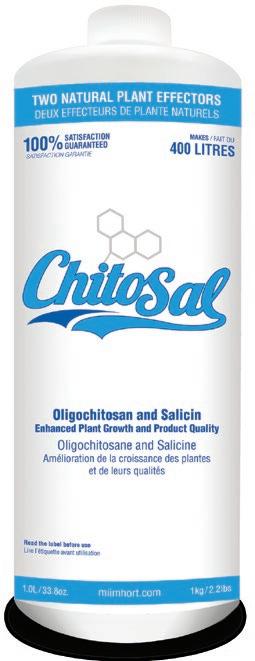
INCREASED trichome development & resin production

INCREASED cannabinoid levels COMPATIBLE with all nutrient programs.(synthetic and organic)
ENHANCED terpene profile
FASTER transition into flowering
TRIGGERS two separate plant defence pathways
PROPRIETARY manufacturing process of oligochitosan

INCREASED flowering and bud formation
COMPATIBLE for use with any growing media
GREAT VALUE only five applications needed SIMPLE TO USE apply only once every two weeks
PROMOTES tolerance to salt, heat, and drought
For soil or hydroponic gardening, outdoor hemp production, field crops and greenhouses. Safe for use with edible crops.
GET YOUR FREE SAMPLE TODAY! Visit our website and use promo code “FROSTY”.
Fluence is a leading global manufacturer of energy-efficient LED lighting solutions for controlled environment crop production. We apply the latest research in photobiology, evidence-based design, precise engineering and advanced technology to maximize quality and production for a variety of crops and cultivators.

Available at over 800 Authorized Resellers across Canada and the United States. To find a local reseller in your area, scan our QR code or visit www.fluence.science/retail
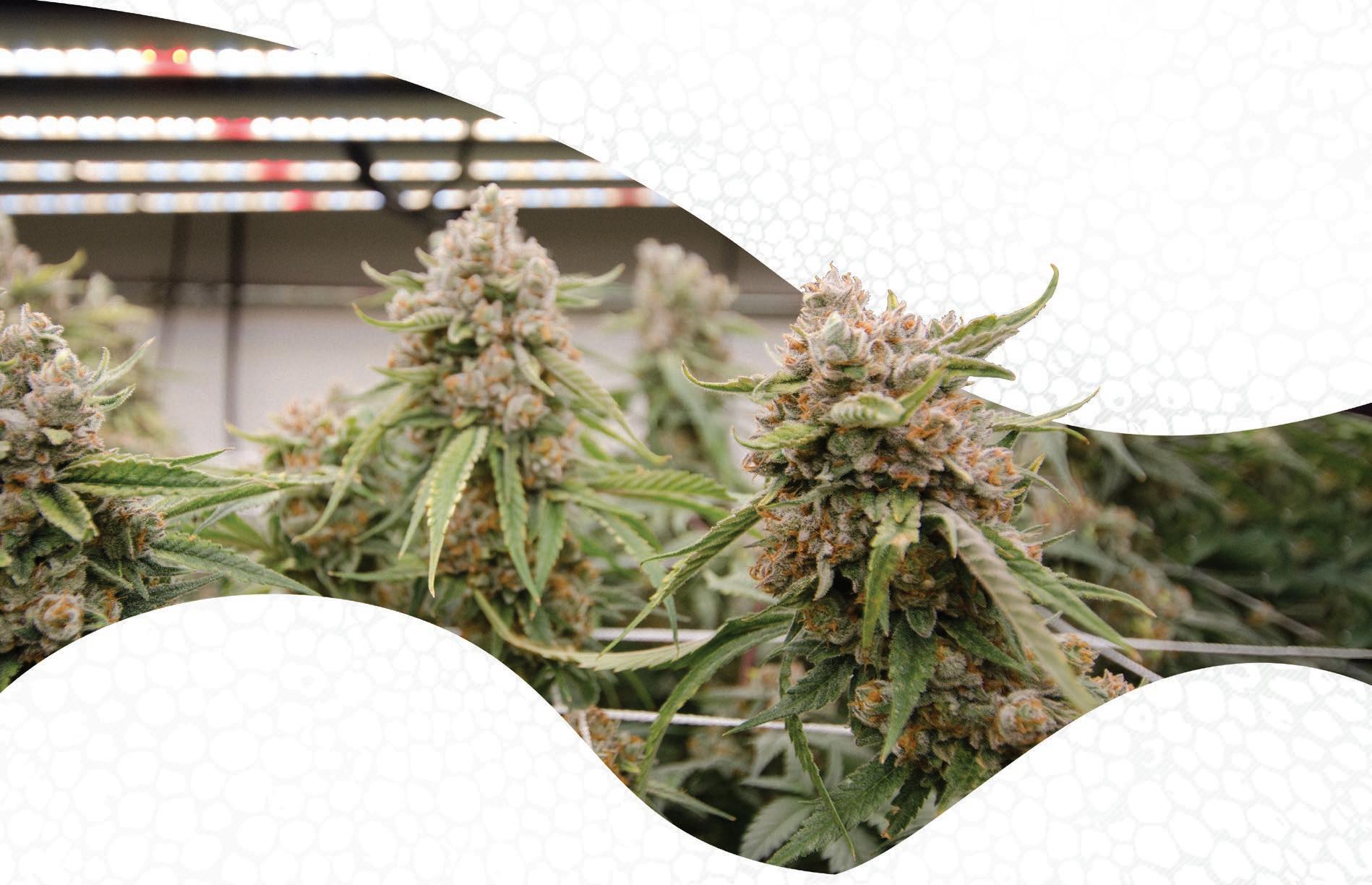



















The idea behind regenerative agriculture is to rebuild soil structure and health by restoring the soil’s microbiome and growing with organic inputs. Of course, this is an oversimplification of a very complex issue. There are many benefits, including drought resistance, natural suppression of pests and plant disease, and increased yields and quality. When implemented on a large scale, regenerative growing techniques help reverse the impacts of climate change.
This global movement is also finding its way into our gardens. That’s right; you can be a regenerative grower and enjoy the perks listed above!
Martyna Krol and Scott Hutchinson explore some inspiring projects in the article Green Futures. In Scouting: 7 Guidelines to Build Your Garden Vigilance, our spotlighted author, Joanna Berg, expresses the importance of being aware of what is going on in your garden. Knowledge is power, which is especially critical for organic gardens; proper and vigilant pest management strategies help avoid disasters.
Whether you are growing indoors or out, amending your organic beds can be a tricky subject. In Dressed to Impress, Cody J. Garrett-Tait gives some excellent advice on ensuring your garden isn’t missing a thing.
One of the main reasons I eat and grow organic is because I do not trust big Ag. In Decolonizing Fertility - A Regenerative Organic Approach, Av Singh exposes the failure of modern agriculture and how it reflects on humanity.
It is not too late to turn back the clock and help this world move toward a more sustainable future. But it requires intention and resolution. The change can start with what we grow, what we eat, and which companies we support. Remember, organic food and medicine may cost twice as much in the grocery store, but it doesn’t cost twice as much to grow.
Adam Clarke, Anne Gibson, Av Singh, Dr. Callie Seaman, Catherine Sherriffs, Cody J. Garrett-Tait, Emma Carter, Evan Folds, Jennifer Cole, Joanna Berg, Judy Nauseef, Martyna Krol, Regi Oneton, Scott Hutchinson, Tom Wall, and Xavi Kief.
PRESIDENT
Eric Coulombe eric@gardenculturemagazine.com +1-514-233-1539
One less thing to worry about.
EXECUTIVE EDITOR
Celia Sayers celia@gardenculturemagazine.com +1-514-754-1539
EDITOR
Catherine Sherriffs cat@gardenculturemagazine.com
DESIGN
Job Hugenholtz job@gardenculturemagazine.com
DIGITAL & SOCIAL MARKETING social@gardenculturemagazine.com
ADVERTISING ads@gardenculturemagazine.com
PUBLISHER
325 Media INC 44 Hyde Rd, Mille-Isles QC, Canada J0R 1A0 GardenCultureMagazine.com
ISSN 2562-3567 (Print) · ISSN 2562-3575 (Online)
Garden Culture is published six times a year, both in print and online.
Hydrofarm
Biofloral USA
Autopot USA
Biofloral
© 325 Media INC
All rights reserved.
Central Coast Garden Products
Hydrofarm Canada
Quality Wholesale
325 Media
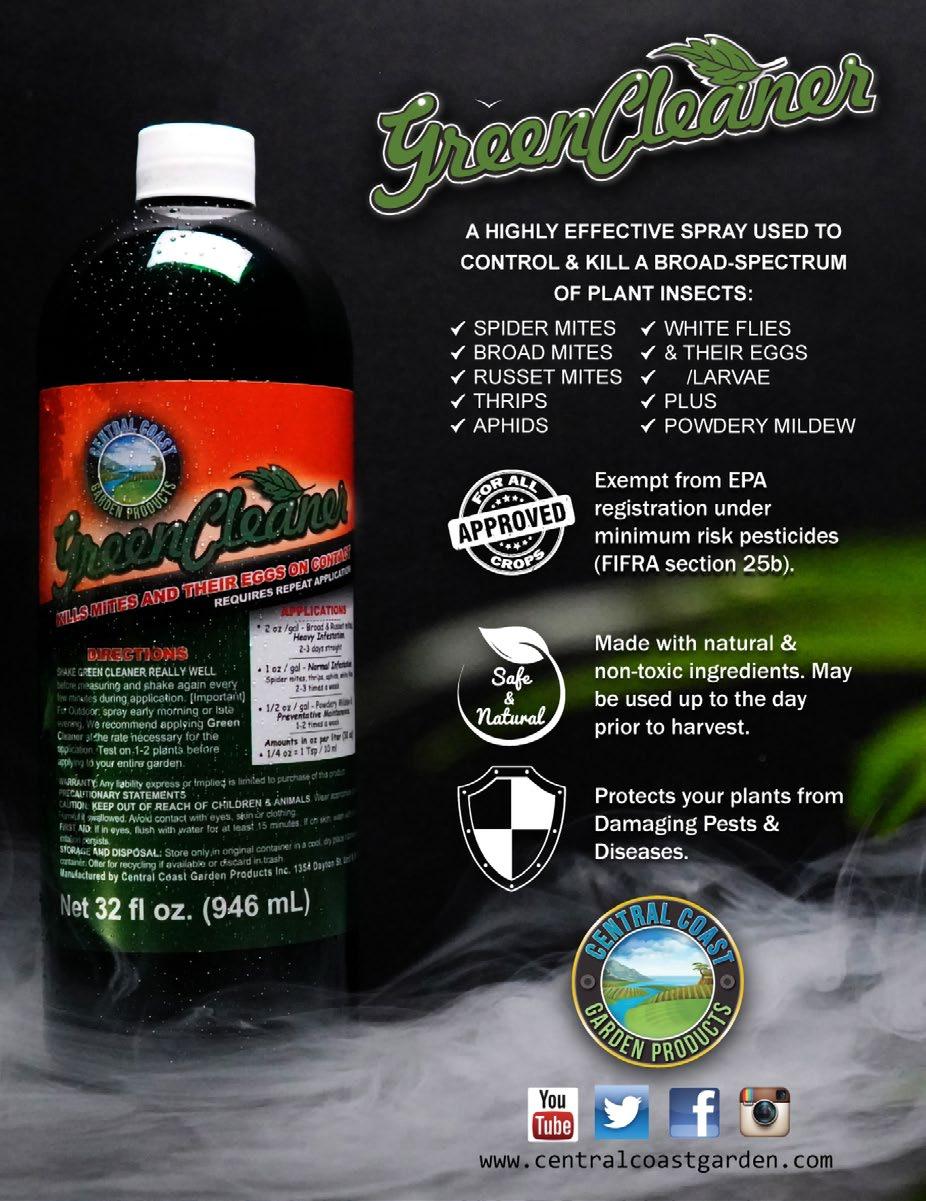

our friend, Joanna Berg! Joanna knows plants and soil; she has a wealth of knowledge to share in regenerative and organic agriculture. She’s a Certified Professional Soil Scientist specializing in pest and disease diagnosis and IPM solutions. Working with growers through her Northern Californian firm, Dirty Business Soil, LLC, Joanna has seen it all when it comes to plant health. Lucky for us, she’s happy to share her garden experiences with Garden Culture in her stellar lineup of articles.
What’s your growing motto?
Don’t freak out. It might sound basic, but if you are in fear mode, you will lose critical thinking and make bad decisions.
What made you decide to dedicate your career to helping plants and growers?
Plant medicine is one of the most powerful natural resources for our health and well-being. Understanding what these plants need so we can steward them for our health and the planet’s health has been the main driver for me.
If cannabis, what cultivar?
Of course, cannabis, but I love growing everything. Anything propollinator, medicinal, edible, or utilitarian is what you’ll see in my garden. I love my oyster mushroom inoculated logs, cedar, tea, and fruit trees, San Pedro cacti, and culinary herbs. My painted daisy makes awesome homemade insecticide because its flowers have high levels of pyrethrum.
Absolutely, in the loose sense of organic or regenerative or sustainable, not the regulated/compliant definition of organic.
I’m a foodie, so tough question! At the moment, I’m having a love affair with bulletproof coffee.
Where in the world would you like to travel to next?
Colombia. My partner and their family are from there, so I want to connect with that place and culture. 3
Are you interested in writing for Garden Culture Magazine? We’d love to hear from you! Send us an email introducing yourself with a sample of your work. editor@gardenculturemagazine.com
Don’t freak out. It might sound basic, but if you are in fear mode, you will lose critical thinking and make bad decisions.

Green Cleaner is a highly effective spider mite spray to control and kill many damaging pests and diseases. Green Cleaner fits in well with all IPM programs and can be used on all crops from start to harvest. Because it delivers an immediate response to many harderto-kill insects, Green Cleaner can be one of the most important tools in your arsenal of pest control solutions.


Check out CentralCoastGarden.com for great tips for removing unwanted pests in your garden.




To find out what separates the Vortex Powerfan S-Line from other fans, you must get inside it! The Vortex Powerfan S-Line fans feature double insulated walls to prevent condensation and reduce the noise level, an integrated back draft damper, a mounting bracket designed for a quick and easy installation, rubber duct connection gaskets en suring airtight connections, and so much more! The Vortex legendary 10-year warranty backs the Powerfan S-Line fans.
B’cuzz Bloom is applied when the plant starts forming flowers, just before it enters the bloom phase. B’cuzz Bloom kick-starts the bloom phase, making it more intense and lasting longer. This will result in an explosive production of thick and compact flowers and fruits that taste and smell great.
DOSAGE: 0.06 to 0.13oz per 1 US Gallon of nutrient solution (0.5 to 1ml per Liter) Available in 16.9 Oz (500ml), 32oz (946ml), 1.3 Gallon (5l), 2.6 Gallon (10l), 5.2 Gallon (20l)
A natural, cost-effective soil amendment derived from Canada’s nutrient-rich North Atlantic Ocean. Harvested by hand, Kelptas tic contains over 60 trace elements for healthy plant growth. Suitable for all crops and applications, you can mix it with most soil conditioners and fertilizers. You can also incorporate it into potting soils, seed and transplant beds, and composting material.
Use Kelptastic to increase flower production, improve crop quality, and boost final yields. Applying Kelptastic helps retain moisture while stimulating healthy root development by pro ducing greater root mass and more lateral root growth. It also improves seed germination and soil health by feeding the organ isms that cycle the nutrients required to feed plants.


Available at BioFloralUSA.com



This 2-2-2 NPK liquid concentrate, known as ‘Squid Juice,’ is a sustainable all-purpose fertilizer made from Squid by-products after being fished for Calamari consumption. Seaborn repurposes the waste product and processes it using a low-heat hydrolysate method to create a 100% organic plant nutrient. ‘Squid Juice’ promotes crop and soil health, giving plants what they need to thrive. Proven results for any crop from trees, shrubs, fruits, vegetables, cannabis, and more.
To find more information, visit Greenflowcanna.com
Don’t you just hate when you’re grinding your herbs, and you see how much goes to waste? Don’t you wish there was a cool 3-chamber lightweight but durable grinder that comes with accessories? Well, look no further Rocket Seeds has a grinder for you! It comes in two colors: Universe Dark Blue and Baby Sky Blue.

Find these grinders at RocketSeeds.com/merch
Devoted to producing optimal plant performance through feeding the soil with quality organic amendments, Gaia Green is also dedicated to supporting an increase in the use of organic products in our urban and rural communities. Gaia Green’s commitment to social and environmental responsibility as a company has driven it to provide its customers with the highest quality earthfriendly products.
Learn more at GaiaGreen.com
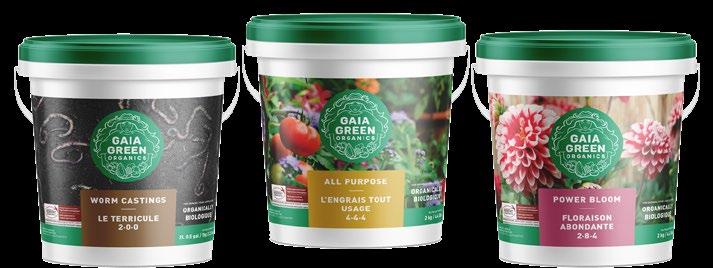
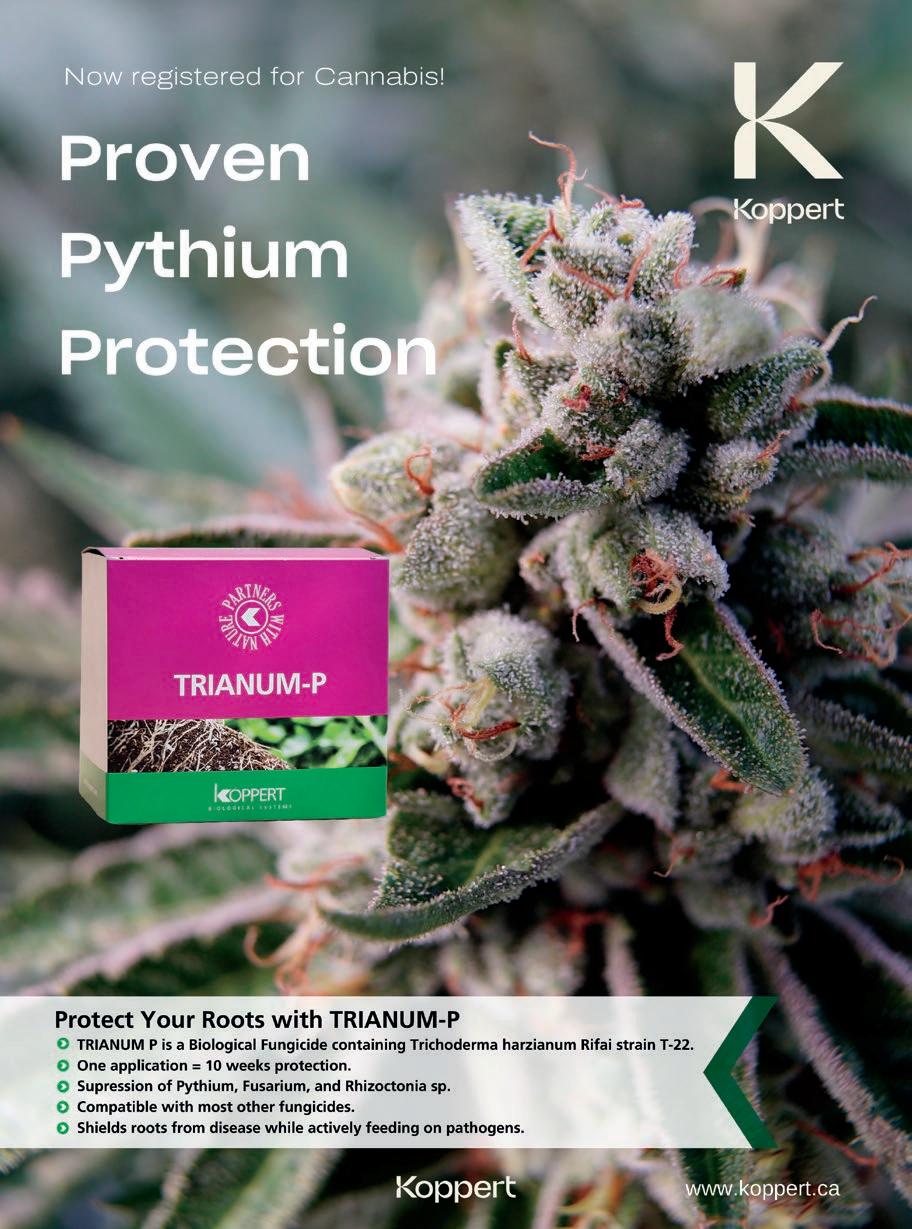
Armed with these strategies, hopefully, we can be better prepared to protect our gardens from future challenging weather conditions and minimize financial loss and disappointment
Vulnerable crops can be protected with suitable shade cloth that allows adequate ventilation while providing other benefits
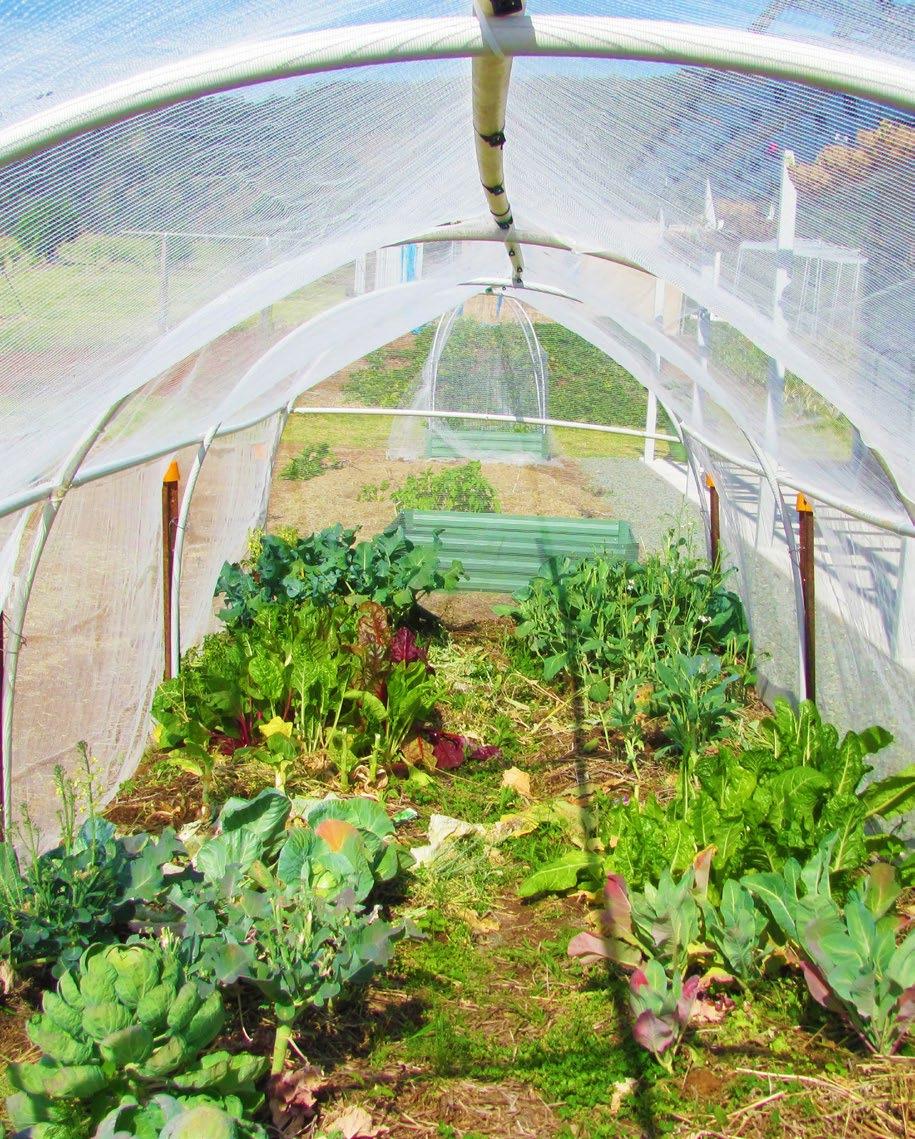
Changing climatic conditions, extreme weather events like flooding, and increasing cloudy days have been more common in the last year. Unseasonal challenging weather conditions have made it difficult for many people to grow a food garden. Since I moved house six months ago, the area I now live in has experienced three floods.
Thankfully, while my garden was not flooded, I have seen firsthand the devastation in our region. Despite excellent drainage in my raised garden bed, I lost a hundred garlic to rot. As the garlic was shooting and establishing, they didn’t have mature root systems and couldn’t hold up against continuous rain.
Many plant species have adapted to less rain after years of drought in Australia. However, extensive rainfall without letup caused the water table to rise in many gardens, and soils became saturated. In some places, it took many days to recede. Those gardens devastated by contaminated floodwaters have lost plants, trees and biodiversity and destroyed the soil’s food web.
Leafy greens that generally thrive in cooler months were largely ruined by rain, too much moisture and unseasonal fungal diseases. Like farmers, many home gardeners lost seedlings of delicate plants like lettuce and spinach. Heavy rain smashes the leaves. Wet conditions bring the slugs and snails out to take what’s left. When I could finally get out to my garden after the rain stopped, most of my spinach plants were skeletonized stalks!
Weeks of heavy rain made it too wet for most bees, polli nators and flying insects to go about their normal activities. So many crops lost their flowers, and few fruits were pol linated. This has delayed the production and harvesting of fruiting crops we usually enjoy during cooler months. As a result, leafy greens that are available in the supermarket have skyrocketed in price. Head lettuces like Icebergs have been selling for $10-12 each. Fast-food chains have been substituting lettuce with cabbage as it’s more resilient to wet conditions and still available. Luckily, lettuce easily self-sows over the cool er months. So post-rain, many gardens had volunteer lettuces popping up to replace those demolished. When fresh produce costs are escalating, we need our food gardens more than ever.
Prolonged periods with extensive cloud cover and little sunlight affect plant growth as they don’t photosynthesize. After the rain, flooding, and disappointment come the clean-up and heartbreak over lost crops.
Yet a garden also offers hope and lessons for what we can do better to prevent future issues or mitigate loss. So, on a sunny day, I spent time reflecting on ways to improve the garden design. We can still get a good harvest by working with aspects of our gardens that we control. Even when the elements and external factors swing the odds against us! We need a backup plan with potential ‘insurance policies’ built into our garden design that enable us to adapt and be flexible in inclement weather conditions.
Observe and reflect when it’s wet. Grab an umbrella and gumboots if it’s pouring rain! Get out and look at your garden in the worst weather conditions. This will show you the weak areas you need to work on. These are a few potential issues to check for:
• Does water pool or backup? If so, do you need to address drainage in this area? How long does the water pond before draining away? Under intense rainfall in storms, flash flooding often occurs. However, this doesn’t mean there’s a permanent problem. It’s just the symptom of a vulnerable area that may require attention. What can you do to help the water move away to prevent damage to plants or property? Block, divert or drain it? Do you need to relocate garden beds to avoid damage?
• Where does water runoff? Does it flow onto your property from a neighbor? Could you redirect it or control it to minimize erosion or damage? Swales and raised beds could be possible options.
• Is rainwater being wasted during heavy downfalls by overflowing downpipes? Could you passively harvest this resource in a water tank or collection point? Turn the ‘problem’ into a solution!

Get out and look at your garden in the worst weather conditions. This will show you the weak areas you need to work on
Build UP. If you have persistent issues with waterlogged soil, it may be better to change your garden design. Wet weather only exacerbates anaerobic soil conditions. Raised garden beds and containers offer an opportunity to control drainage, improve water flow and grow plants in oxygenated soil.
Filter the Sun. Intense UV sunlight and heatwaves can cripple crops. Consider ways to filter the sunshine to minimize sunburn, transpiration and plant loss. Shadecloth and greenhouses may be options. On a smaller design scale, you may be able to use taller species or shade structures to provide some protection during the day.
Watch the weather forecast and plan accordingly. Be prepared with data whenever possible. If storms, long periods of heavy rainfall, or intense heatwaves are predicted, install crop protection covers if you can. For example, move container gardens undercover temporarily. You may be able to use tarps, awnings, patios, decks or other covered structures. Relocate small pots under trees where the canopy provides some protection from heavy rain and sun. Put heavy pots on mobile castors so they can be moved around quickly if inclement weather comes on suddenly. It can mean the difference between saving or losing your plants.
“Make hay while the sun shines.” When the weather is sunny, get out, plant, make compost, maintain your garden, and harvest. When we get the opportunity to be productive, we have to grab it.
Harvest regularly. Minimize losses by staying on top of picking produce when ripe or almost ready. It’s better to get some food on the table than risk total loss. That means daily observation, so you get your timing right! So grab a cuppa and observe your garden.
Choose shade-tolerant edibles. Consider planting species that don’t need full sun or can tolerate partial to full shade positions. This may open up the foods you can grow in cloudy conditions, such as leafy greens, carrots and spring onions.
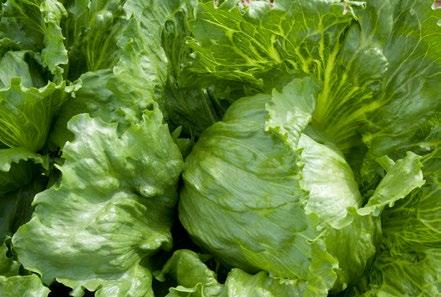

Hand pollinate. If crops are flowering, but bees and pollinators are inactive due to rain, you may have to pollinate them by hand. Some crops like pumpkins only open their female flowers for a limited time, so the window of opportunity may be short. Pollinating by hand takes commitment but ensures you still get your crops fertilized in inclement weather.
Watch your watering practices. If you have had recent heavy rain, you may be able to delay watering for longer than average. Use a moisture meter to check soil moisture levels. If your
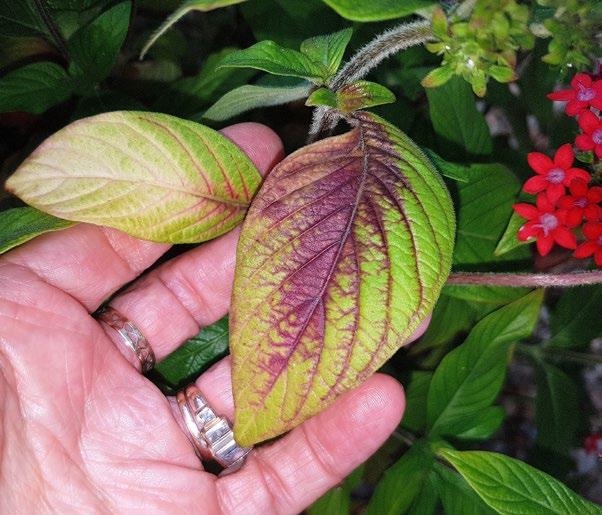
Plant leaves indicate nutrient deficiencies
Growing crops in containers as well as raised beds provides flexibility and spreads the risk
Head lettuce like iceberg are escalating in price
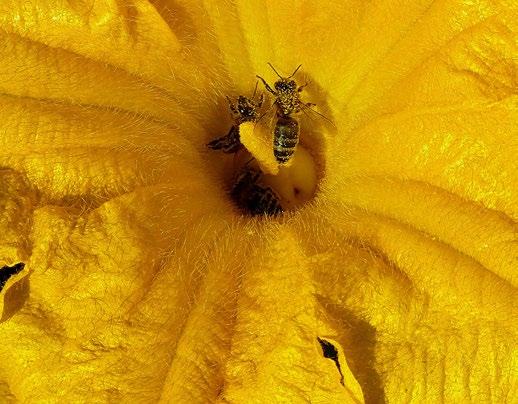
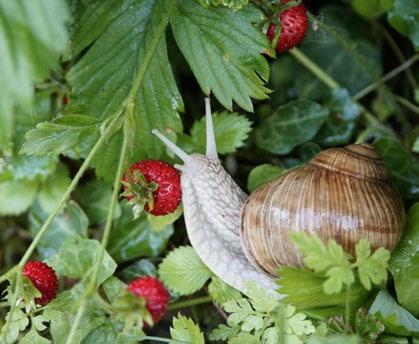
soil contains humus, clay and organic matter, it also tends to hold water for longer than sandy-based soils that drain quickly. Mulchcovered soil also retains moisture far longer than uncovered soil. Take these factors into consideration before watering. If your plants need nutrients, consider foliar spraying rather than adding to a waterlogging problem.
Replace soil nutrients. Heavy, persistent rainfall often leads to the leaching of soluble soil minerals. Look for plant clues that they are becoming nutrient-deficient. Changes in leaf color or pattern are a good visual aid. Consider quick fix foliar sprays. Liquid seaweed, kelp, compost tea or vermicast sprays can help replace essential trace elements via the leaves. Reapply all minerals to your soil or potting mix as needed under the mulch. Side-dressing with compost or worm castings, organic soluble fertilizers and soil conditioners can help replace nutrients in a form plants can take up relatively quickly.
Restore soil biology. It’s hard to take when you lose your valuable soil microorganism community. It’s a major setback. The living soil food web is vital for plant health and growth. Try inoculating your soil or potting mix with worm castings, microbial products and compost to help restock beneficial soil worker populations.
Protect worm farms and compost systems. Ensure standalone worm farms are not subjected to rain or intense sun. They need a protected, dry, cool position so the compost worms don’t drown or fry in hot weather. Similarly, covering open compost bays and systems during long periods of wet weather can help prevent valuable nutrients from leaching.
Match species to soil conditions. Most plants hate wet feet, but some can tolerate such conditions and still thrive. Consider your potentially boggy zones as opportunities for growing water-loving species. A few examples are bananas, taro, vetiver grass and comfrey.
Spread the risk. Rather than putting all your eggs – or plants – in the one’ basket’ or garden bed, split your plantings. If you have the space, spread your edibles around the garden in different zones or grow at least some in pots you can easily protect. I found the garlic I sowed in pots survived the destructive rain event, which saved me money, time and energy. Spreading the risk allows you to control the potential damage and increase the likelihood of a successful harvest.
Armed with these strategies, hopefully, we can be better prepared to protect our gardens from future challenging weather conditions and minimize financial loss and disappointment. 3
BIO Anne Gibson, The Micro Gardener, is an author, speaker and urban garden community educator on the Sunshine Coast, in Queensland, Australia. Anne is passionate about inspiring people to improve health and wellbeing, by growing nutrient-dense food gardens in creative containers and small spaces. Anne regularly presents workshops, speaks at sustainable living events, coaches private clients and teaches community education classes about organic gardening and ways to live sustainably. She has authored several eBooks and gardening guides. Anne shares organic gardening tips and tutorials to save time, money and energy on her popular website - TheMicroGardener.com
If your plants need nutrients, consider foliar spraying rather than adding to a waterlogging problem
Mother Nature decided to humble me by kicking me square in the family jewels. She pointed and laughed as I squirmed on the floor in mostly emotional pain
Ihad dreams of bringing bushels of overstock veggies to my neighbors, beaming with plant father pride. I wanted to humbly brag about my tomatoes and take heirloom seed requests. Because I am the garden guru.
I am the harvester of fruits. Meet the overconfident botanical enthusiast.
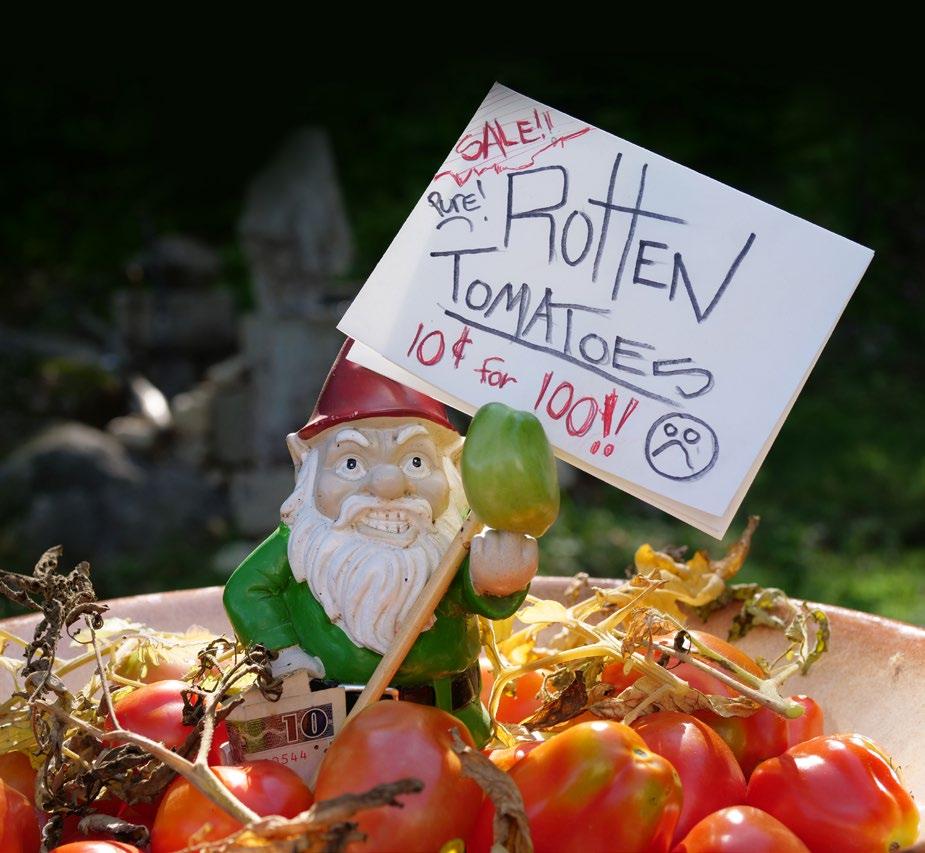
Then, Mother Nature decided to humble me by kicking me square in the family jewels. She pointed and laughed as I squirmed on the floor in mostly emotional pain. I’ll be lucky to make a damn stir-fry this season. My zucchini and eggplant were abject failures, and if anyone is producing a movie called “Rotten Green Tomatoes”, I have your star players in my garden. I fully expect my Grandma Rosa to have a disappointed yet welcoming look on her face when we meet in the great garden in the sky. Not all seasons are winners, but what the hell happened?
I peed a little in the watering buckets because I am a backyard scientist and wanted to see if it would be viable nutrition for my plants. It was not.
Wait… I know what it is. It’s a little from column A and a little from column Pee. I was careless and impatient. I didn’t have my ear to the ground. I had a one-sided juvenile argument with Mother Nature.
I had brought my anxiety and bad juju into my happy place, and it’s showing in the yellow, rotted spirit of these plants.
I sound like a hippy, but it’s true. I was having full-blown tantrums in the garden, ripping out plants and throwing them into the fire pit while my Frenchie, Frankie, ran for cover.
I’m not one for excuses, but let me shoot a couple of hypotheses at you, the reader. I recently read an article that stated our rainwater is getting more polluted with forever chemicals AKA Per and Poly-Fluoroalkyl (PFA’s). This makes what was once perfectly drinkable into something you wouldn’t wash your feet with. I tested the rainwater, and the pH registered way out of acceptable norms. YIKES. The weather has been brutally hot early in the season, making for an underwhelming and challenging start. The absence of enough pollinators, AKA Bees, had me on all fours trying to manually pollinate like a 200-pound bumble bee with his stinger in the front. Can it be that Mother Nature didn’t like my Karma this year?
In all honesty, I peed a little in the watering buckets because I am a backyard scientist and wanted to see if it would be viable nutrition for my plants. It was not. It must have been the Whiskey. But a little urine-laced water couldn’t have been the culprit, could it?
Living in the country, I am surprised that pests were not a bigger problem. However, when you’re only pumping out one pathetic zucchini, and you come out to find it half eaten like some bratty child’s chicken nugget, it’s enough to make a grown man weep into his arugula. Grasshoppers and squirrels are my local nemesis, and boy, did they make their presence known. The deer stay away, as I am often out there naked, firing my .22 indiscriminately into the woods while doing my best angry deer impression.
Regardless of the environmental challenges that Nature or my urine threw at me this season, I should have been able to pull a half-decent harvest. I should have been able to pivot and adjust. I am the garden guru. I am the harvester of fruits. I am the idiot who peed in his water. Meet the overconfident botanical enthusiast. What the hell happened?
Ultimately, I should have been fighting a little harder for a good season. Whether dealing with new environment, PFA’s or psychotic squirrels, I should have stepped up as the master of my acre. The weather, heat and polluted sludge they call rain nowadays certainly didn’t help. I recently accused my mother, the brown thumb, of being walking plant genocide. Well, the apple doesn’t fall far from the rotten tomato. She’s getting a good chuckle over this, and it’s warranted.
There’s Hope Momma didn’t raise no quitter. The brown thumb must be silenced. The garden guru must rise like a spring onion from the ashes. The harvester of fruits needs some DAMN FRUITS! I have been taking notes and have a plan for next year. Build some new elevated beds, use nothing smaller than a 7-gallon container and pH ALL water, not just what’s in the grow tent. I can no longer assume the rainwater is ready to use. My whole exterior nutrient game needs a complete re-think. I also need to pick the right cultivar for my area as my region seems a little less hospitable than I thought to some of my preferred veggies. The chili peppers did well, so I might start making hot sauce—a silver lining for me, but not my butthole. In a recent article, my editor suggested chickens for the grasshoppers, so that’s on the agenda. I have already picked out names for the ladies. Thelma and Louise. Also, I promise there will be little to no pee in the water next year.
Finally, I will do my best to leave my anxiety out of the garden. I will just enjoy my time there and be vigilant for deficiencies, squirrels and my bad habits and negative energy. But, most importantly, I will lie face down in my garden and whisper passionately, “No matter what happens, I love you. No matter what happens, I love you. I am sorry for peeing on you, and please don’t embarrass me next year; I work at a f@#*ing gardening magazine.”
Happy Growing. I’ll be over here enjoying the world’s tiniest eggplant from my impotent garden. 3
BIO Regi Oneton is a multi-disciplinary artist and daytime executive. He’s been a member of Socan since his first album release at the age of 20, and is a self-taught audio engineer and self-proclaimed studio rat. Regi is a late-blooming street artist and painter whose works can be found hanging in the offices of Burton and Vans Canada. Long-time contributor to the Under Pressure Graffiti Festival and lover of the Arts. As the years plow forward, he has added botanical enthusiast/plant father to his litany of passions. His interests include writing and spending too much time looking at his phone.
Welove a good garden read, and The Regenerative Gar den by Stephanie Rose is a wonderful way to spend some time on a lazy Sunday afternoon. Achieve pro ductive, eco-friendly gardens following the advice on her pages and from some of the awesome blogs at GCMag.co
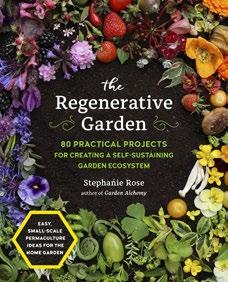
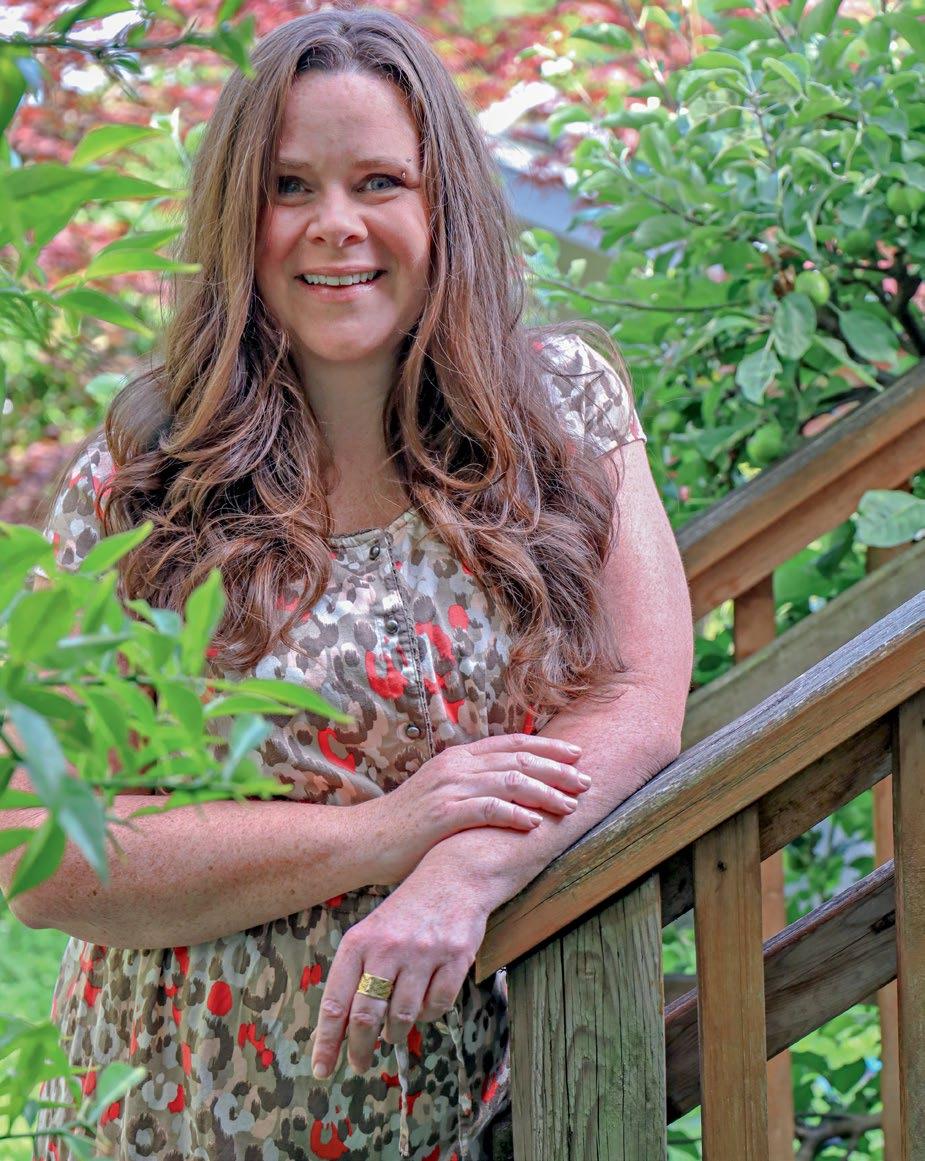
The Regenerative Garden 80 Practical Projects for Creating a Self-sustaining Garden Ecosystem offers tips and tricks to achieving lush, productive, and re silient flower and vegetable patches without a ton of work or expensive inputs. Flipping through the pages of this book will help readers learn how to better work with nature to create an eco-conscious paradise in any space, whether it be a sprawling backyard or a tiny patio. The Regenerative Garden deserves a spot on your bookshelf or coffee table; until you get your hands on a copy, we chatted with the award-winning author Stephanie Rose about what inspired her to put her thoughts on paper.
What made you decide to write a book about regenerative gardening?
I started gardening to rehabilitate from a severe and sudden illness that left me disabled for almost eight years. Initially, I studied how modern folks garden: growing vegetables in raised beds, designed containers, and neatly spaced ornamental landscape plants. But the more I went back to basics and the ecology of the plants, soil, and wildlife, I could see that the way we are currently gardening is labor-intensive and wasteful. We bring in new soil, add plants in rows, weed the spaces around them, and then toss away every thing we cut back. It takes a lot of supplemental water and strips the soil of nutrients. How plants grow in a forest or meadow is a much more efficient design. In those environments, plants work together with each other, the soil, and wildlife as a self-sustaining ecosystem. I redesigned my gardens following those principles and have never looked back. I wanted to share the concepts of regen erative gardening along with easy and practical projects for home gardeners to include these concepts in their yards.
Can home gardeners follow this growing method even with a small balcony and a few containers?
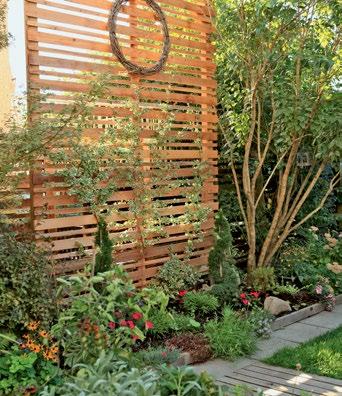
Absolutely! Each chapter of the book has several projects that can be used in small spaces, and in almost all cases, the projects are scalable to large or small gardens. I garden on a small, urban lot, so many of the projects are shown in my limited space with the intent to scale up or down depending on what is available. The most important thing is to learn the “why” behind the projects because armed with that knowl edge, the gardener can adjust the ideas to fit their individual needs.
Growing naturally can be intimidating, but the concept is quite simple in practice. So what are the very basics gardeners should know about regenerative growing?
I’ve divided the practice into six segments, each with a dedicated chapter in the book: soil, water, plants, climate, ethics, and community. These concepts work together and interconnect to build a regenerative garden. We can grow self-sustaining ecosystems through learning about soil health; water catchment, storage, and use; the plants we choose; the climate or micro-climates we garden within; ethical use of resources and waste management; and seeing our gardens as but one piece within a larger community.
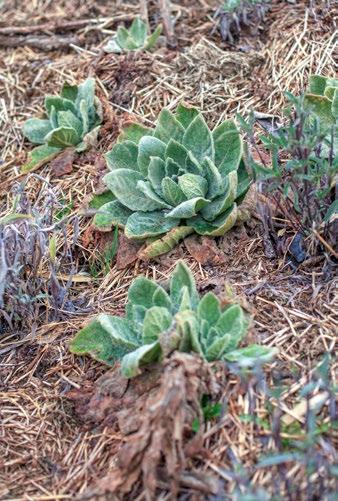
I wanted to share the concepts of regenerative gardening along with easy and practical projects for home gardeners to include these concepts in their yards

How have you seen your garden change and grow by following regenerative growing practices?
With how passionate I am about gardening and how lush my gardens are, garden visitors are always surprised by how little effort I spend maintaining them. I started each of the gardens from either lawn or unhealthy/dead soil, but through working with each piece of a regenerative garden, they are now thriving, fruitful, and mostly with no mainte nance. The spaces invite wildlife, support the community, reduce waste, recycle water, and work with my unique mi croclimate. In The Regenerative Garden, I share projects and concepts to get the gardens to this state. I made sure all projects were easy and accessible so other gardeners can feel the joy of a regenerative garden, along with challenging the orthodoxies of gardening today.
Your book offers many exciting project ideas for home gardeners and communities alike. The seed-sharing library is one of my favorites! Can you talk about one of yours?
I really love the idea of growing a Kindness Victory Garden and the Urban Flower Stand. Both proj ects allow the gardener to grow cut flowers in their garden to give them away. Cut flowers are often overlooked in the home garden, es pecially with many folks turning to gardening for food. These projects encourage gardeners to give away bouquets of home-grown flowers to community members, and as such, they are spreading a little joy that can lift someone’s mood. With the challenges we face worldwide, small seeds of kindness can grow into the flow ers we so dearly need right now.
What would you say to encourage gardeners to jump on the regenerative bandwagon?
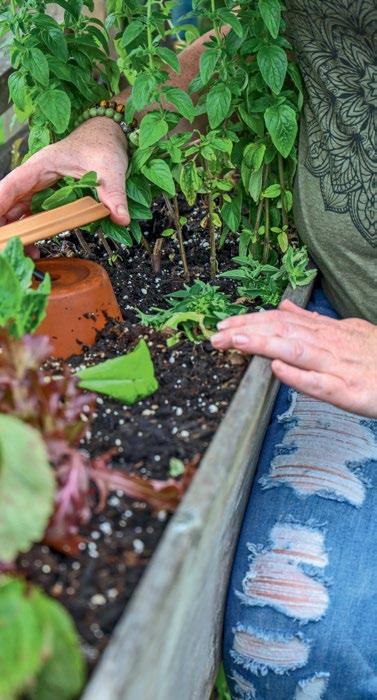
I can’t think of one good reason NOT to start a regen erative garden! Following the methods of Mother Nature makes our gardens less work, more productive, saves
money, reduces waste, supports our communities, and replenishes our earth. I have written The Regenerative Garden with practical project ideas that are completely attainable and scalable for different needs. All the while, I encourage gardeners to give themselves a high five for every effort in this direction without a hint of guilt for not doing enough. All steps towards a regenerative gar den will help us all, so if the only thing you can do now is buy the book or take it out from the library, then that is worth celebrating! The more we learn and spread the word, the more we help the earth and its inhabitants. 3
BIO Catherine is a Canadian award-winning journalist who worked as a reporter and news anchor in Montreal’s radio and television scene for 10 years. A graduate of Concordia University, she left the hustle and bustle of the business after starting a family. Now, she’s the editor and a writer for Garden Culture Magazine while also enjoying being a mom to her three young kids. Her interests include great food, gardening, fitness, animals, and anything outdoors.
The spaces invite wildlife, support the community, reduce waste, recycle water, and work with my unique microclimateCredit: The Regenerative Garden, Pg 42




How do you wash your greens? A recent study finds it doesn’t matter how you wash your home-grown produce, but rather that you wash it well before eating to reduce lead contamination.
Urban gardening is on the rise, and that’s a great thing for the environment and getting nutritious food into the bellies of city dwellers. But unfortunately, urban gardens also face several challenges, including dealing with contaminants like lead.
Urban gardening is on the rise, and that’s a great thing for the environment and getting nutritious food into the bellies of city dwellers. But unfortunately, urban gardens also face several challenges, including dealing with contaminants like lead.
Consuming such toxins can damage organ systems and is especially dangerous to children, so the study, published in the Journal of Environmental Quality, wanted to find out if washing food crops can effectively remove contaminated soil. Researchers at Cornell University focused on lettuce due to its many crevices and intricate surfaces. They grew the greens in an urban community garden in Brooklyn, NY, and in a rural field in Ithaca, NY, with either high or low levels of lead in the soil.
After harvest, researchers tried various washing strategies such as rinsing with tap water, soaking in water, soaking in vinegar, and soaking in a commercial vegetable wash solution. The results showed that all the methods effectively removed lead contamination by about 85% and that good cleaning is essential even with greens grown in low-lead soils.
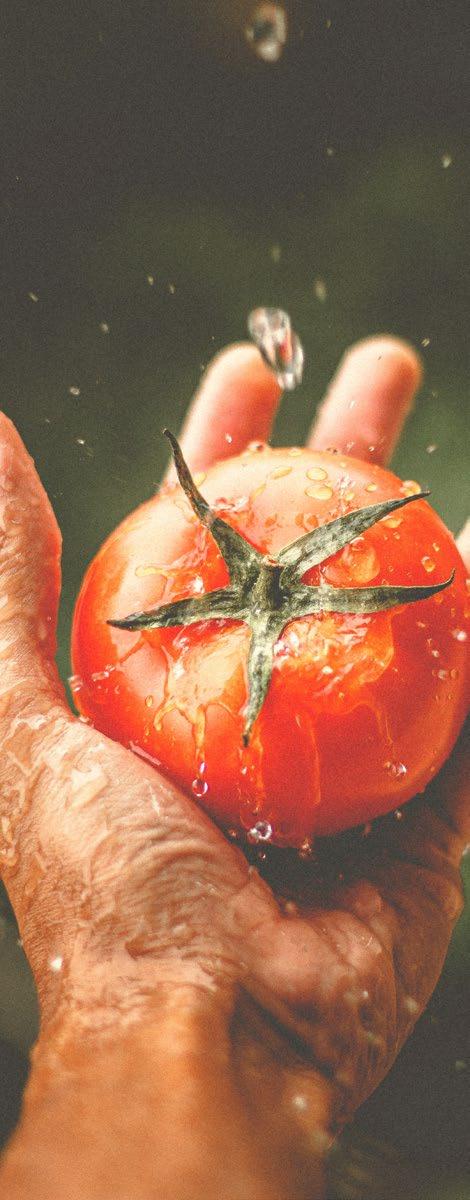
The study also finds that mulching and using hoop houses or greenhouses reduces lead levels by keeping the toxin away from the plants. Combining management practices like mulching with washing reduces lead levels in lettuce by 97%.
So, eat your greens, but wash them well too! 3

Source:
• Journal of Environmental Quality, a publication of the American Society of Agronomy, Crop Science Society of America, and Soil Science Society of America.

Many believe native plants lead to an unkempt and messy garden full of unwanted insects. For these reasons, some municipalities and neighborhoods regulate the use of native plants in yards. But there are many benefits to including these low-maintenance beauties in your landscape. These five easy tips will help you create an award-winning space worthy of a magazine cover!
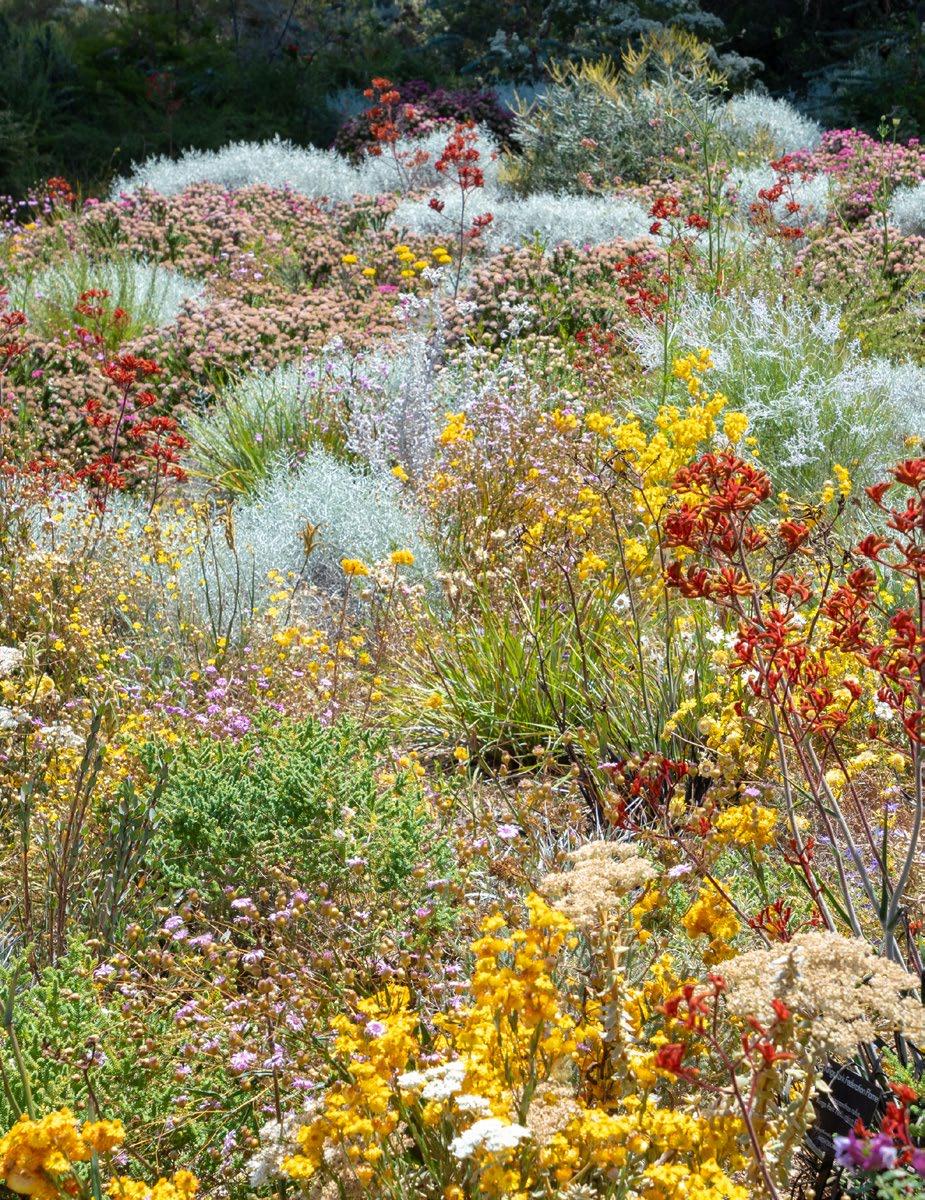
I often see the same landscape in neighborhood yards, and they do not include communities of diverse native plants and pollinating insects. As a landscape designer and gardener, I work to convince homeowners that diversity in the garden is essential. Native habitat gardens repair barren and degraded landscapes, connecting homeowners with the natural world and giving them a role in improving the landscape and contrib uting to reversing climate change.
These gardens also add to the value of the neighborhood; in vesting in landscaping raises home prices. Gardens create a quieter area without the loud sounds of regular yard maintenance machines. A native landscape is an oasis for insects, bees, butterflies, and birds.
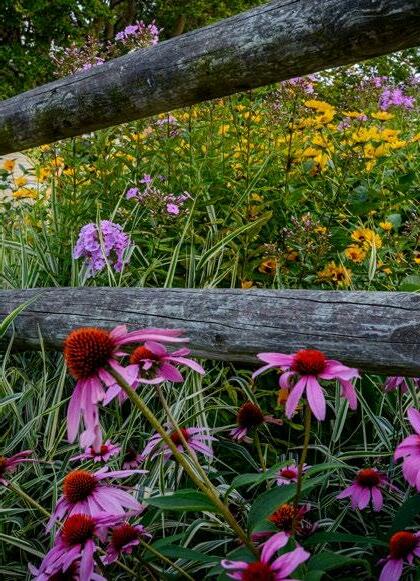
1. Create a cohesive design
2. Plan how people will walk through the garden
3. Choose plants
4. Choose materials
5. Plan for manageable maintenance.
Although we may be most excited about the plants them selves, we first need a plan for where the garden will exist and the best spots for each plant.
The edges of every design play a significant part in its cohe siveness. Think of your yard as a picture frame containing the parts of your garden. Each area fits together like a puzzle. The edges that meet the neighbors’ yards, the sidewalk, street, and common areas must be inviting. For instance, a band of mown grass backed up with shorter native plants creates positive interest in your garden.
You will need a map or site plan of your yard so you know the size of the area for ordering plants and materials. You can do the measuring, but you can often find the information in your county records department, along with the location of property lines and utility easements. This will save you from planting beyond your lot and on top of utility lines. Generally, planting perennials and grasses over deep utility lines on your property can be done, but be prepared for the utility company to tear up the area for repairs.
Make a list of elements you will need in the garden, such as a patio, a pergola, a shed, benches, and play equipment. Then,
think about how you will access each area, either through mown grass or stone or paver paths. You will need to reach all areas to observe the habitat you have created and to maintain the garden.
A well-planned garden space will draw visitors into the yard and up to the front door; native plants will help you achieve this welcoming effect. Perennials, ornamental grasses, and a small tree with seating on the porch or amongst the plants create an outdoor vestibule. Add to the sensory experience by using shorter native plants along the walk up to the house.
Use the same design tools in the backyard. Incorporate paths from the back door or continue one along the side of the house. Guests do not want to be greeted by six feet tall grasses and perennials as they step into the garden. Instead, create a winding path that does not reveal all the puzzle pieces at once. Punctuate flower combinations with a handful of tall, majestic plants. Provide stopping points with benches where people can take in the best views. If you plan a pergola, you will need a path leading to it.
diversity in the garden is essential
Plant selection is the fun part! Spend some time researching plants native to your area. Some species grow in many parts of the coun try. Understand the conditions the plants of choice need to thrive, including soil type, moisture and light requirements, and heat and cold tolerance. Learn about the birds, butterflies, insects, and oth er wildlife native to your area that you would like to attract to the habitat you create. Look for those plants in catalogs, garden centers, and plant sales.
Native gardens improve soil characteristics that resist erosion and create favorable growing conditions for native habitats. As a result, fewer resources, such as water and mower fuel, will be needed to maintain the garden. You also will not need any fertilizers or pesti cides.

To imitate native prairies and meadows, design your garden with plants of different sizes. However, use only small and medium-sized plants to scale the plan to a smaller footprint. When seated on a bench in a garden, the tall plants can overwhelm a visitor. However, they can also create an excellent all-natural privacy screen in summer.
Buy plants in flats or small pots. These little guys catch up with gallon plants quickly and adapt well to transplanting. Place them about a foot apart. Using a bulb-planting attachment on an electric drill works well, especially if your ground is hard.
Bed preparation requires the removal of all existing plants with a sod cutter or using a non-residual herbicide. Do not work the soil, as digging will bring weed seeds to the surface.
• Butterflyweed, Asclepias tuberosa
• Liatris, Liatris sp.
• Black-eyed Susan, Rudbeckia hirta
• Salvia , Salvia sp.
• Coreopsis, Coreopsis sp.
• Big Bluestem, Andropogon gerardii
• Prairie Dropseed, Sporobolus heterolepis
• Indian Grass, Sorghastrum nutans
• New Jersey Tea , Ceanothus americanus
• Chokeberry, Aronia sp.
• Pagoda Dogwood, Cornus alternifolia
• Redbud, Cercis canadensis
Think of your yard as a picture frame containing the parts of your garden. Each area fits together like a puzzle

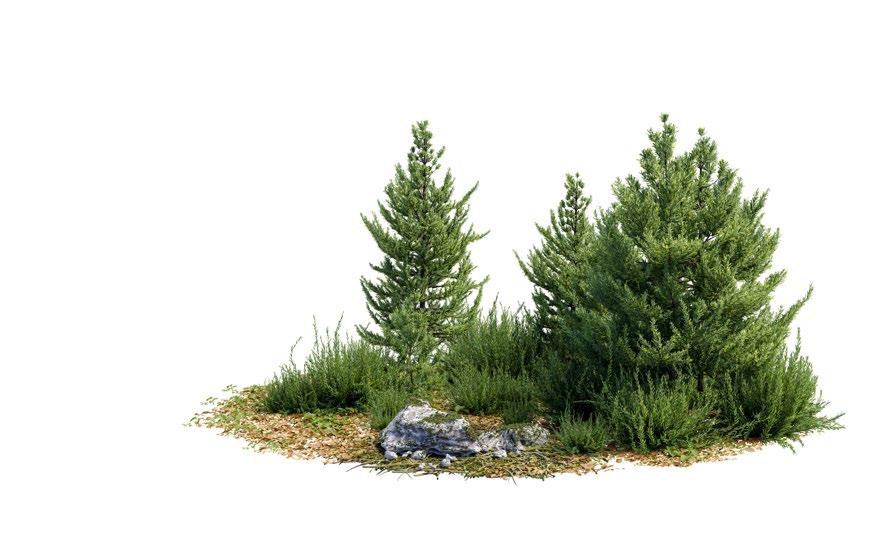
In addition to choosing and buying plants, you will need hard materi als to create pathways.
Paths made from stepstones or pavers keep feet clean and dry. They also add a design element and vary in size, shape, and color. Using crushed rock or gravel in the paths is possible, but you need an edge because these materials shift and travel.
An excellent choice for native gardens is stone or cast stone with a natural appearance. However, it is also possible to introduce a differ ent material and style. Use modern hard materials and furnishings for a look that will catch people’s attention. Pergolas, patios, seating, firepits, and play areas give your native land scape a friendly, inviting vibe.
Your native plant garden will not need fertilizers! When the soil is poor, compacted or shallow, use organic soil amendments to make it plantable. If you need to mulch due to high heat and drought, use a thin layer of compost. It is easy to over-improve the soil; native plants will proliferate and fall over, creating an unkept-looking garden.
These gardens respect the health of your family and neighbors since they are chemical-free. The landscape does not pollute the water, soil, or air. Consider including a water management plan so that rain fall stays on the site and does not run off into nearby yards.
While reasonably low maintenance, unfortunately, the task of weeding the native garden will not disappear completely. Un til plants cover the soil surface, you will need to weed between them. Planting density, no-till practices, and increasing soil health will eventually reduce weed pressure.
Native plants do not require a lot of water. However, you will need to provide sufficient moisture the first season you plant them. Small, young plants need evenly moist soil; they will tolerate drought as they age. Placing soaker hoses on the ground, winding them through the gar den, and covering them with a sprinkling of compost is a great idea. As the new plants grow, you will not notice the soaker hoses. Leave them in place for occasional use in the second year after planting.
When you cut down the plants is up to you. While you may not love the look of spent plants, leaving them as long as possible is essential. Native insects lay eggs in hollow stems, and birds use dead plant material as a feed source in the winter and for protection from the wind and cold. Finally, resist the urge to deadhead your flowers; the birds love the seed heads!
BIO Judy Nauseef is a freelance writer, landscape designer, and speaker specializing in sustainability and gardening with climate change. She writes about native plants, habitat gardens, prairie designs, stormwater management, and travel. She is the author of the book Gardening with Native Plants in the Upper Midwest: Bringing the Tallgrass Prairie Home. Her blog and newsletters can be found at judynauseef.com
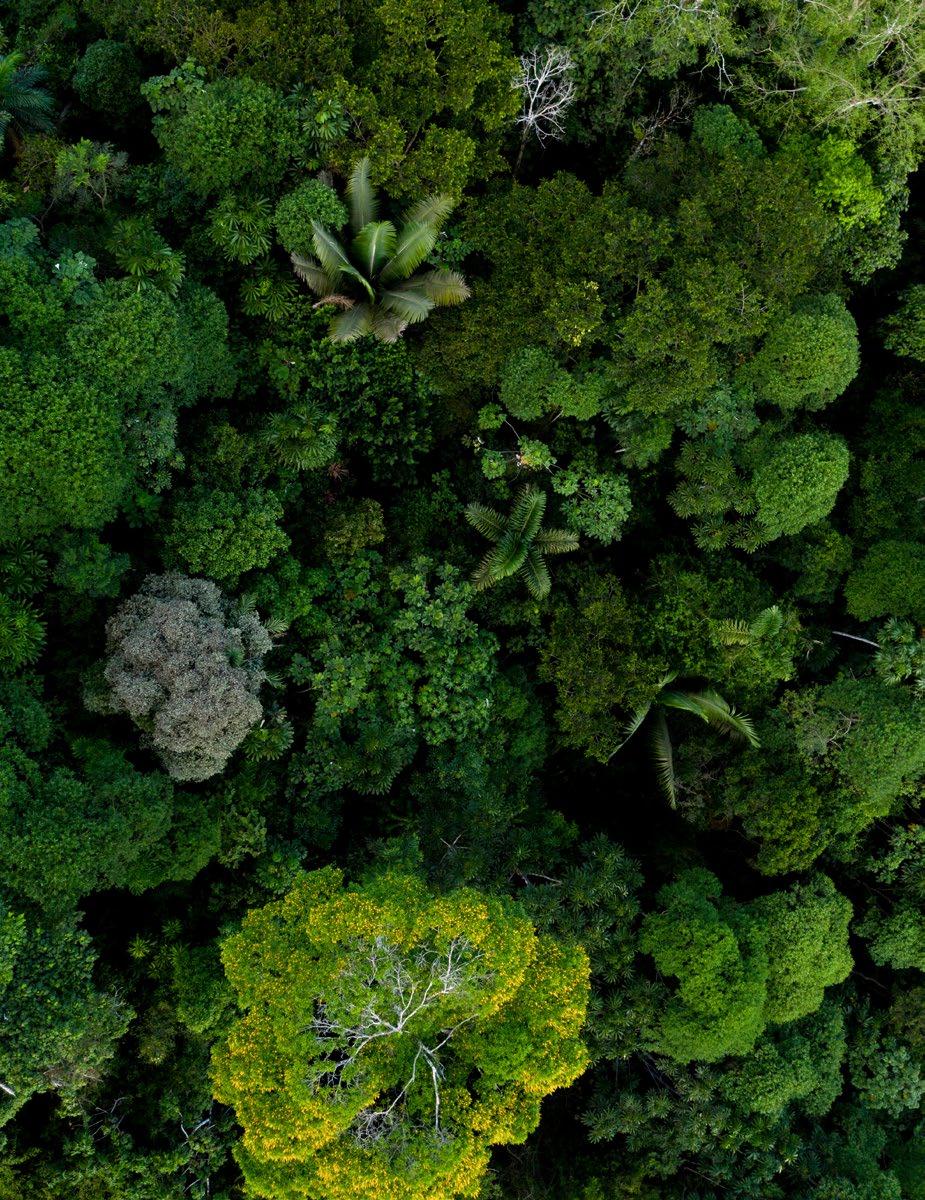
ability to thrive on Planet Earth is a function of diversity. The strength found in the biodiversity of Nature is a fundamental principle for all healthy living systems, yet, despite knowing this literally and intuitively to be true, our human systems can’t sustain us in this way.
The impact of this disconnect is stag gering. Some estimates put animal extinction at one species every five minutes, or around 150 species daily. The Amazon rainforest is the most biodiverse and climate-stabilizing eco system on Earth, yet we continue to destroy it at an alarming rate, primar ily to support short-term farming ef forts. Scientists believe all coral reefs will be threatened by 2050 and, at the current die-off rate, could be extinct by 2070.
The Amazon rainforest is the most biodiverse and climate-stabilizing ecosystem on Earth, yet we continue to destroy it at an alarming rate, primarily to support short-term farming efforts
But it’s not just biodiversity. Humans seem to limit diversity in almost everything we do. According to Dr. Zach Bush, over the last 200 years, 97% of indigenous cultures and 97% of arable soils have been destroyed. In 1983, 50 media companies owned 90% of the landscape; today, only six exist. The health care sys tem has been almost wholly consolidated. The same applies to the food system, with about ten corporations owning virtually all the food items most eaters buy.
The average American diet may be the saddest representation of diversity. The healthiest diets have the most variety, but only 1 in 10 people in the United States eat the recommended amounts of fruits and vegetables daily. According to Michael Pollan on the Joe Rogan Podcast, the largest source of antiox idants in the American diet is coffee and tea, which signal how few fresh foods we eat.
The illusion of choice across our culture, media, and food sup ply weakens the capacity for a healthy expression of human life. Evidence of this includes the chronic disease epidemic, the poverty manifest in the 1%, the us vs. them posture rampant in United States politics, the cynicism of the mainstream media, the overt censorship alive in the Covid Moment, and beyond.
As recently as 200 years ago, more than 90% of the global population participated in agriculture. Now, less than 2% of the US population identifies as a farmer. Without a doubt, the
consolidation of the agricultural sys tem has made it weaker, which was on full display with the breaking of the supply chain that we are still experi encing from the pandemic lockdowns.
Consider that Bill Gates, a software tycoon and a champion of genetically modified crops (GMO), is now the largest holder of farmland in the United States. We are agricultural beings; could there be a clearer signal for the depth of the centralization and control that has infected human life?
We Know Better Humans have championed techniques such as permaculture and agroforestry that maximize output with minimum input.
Yet, more than 99% of farms are conventional monoculture, with much of that as commodity crops grown for cows and cars, not human nourishment. Even the philosophy of agricul ture is centralized in the idea that weeds, pests, and disease are bad luck and that they must be killed. Somehow, we have forgotten that this approach also kills the good things.
A basic rule for living systems is that the more homoge nized the system, the less resilience. Yet, despite this logic, we use pesticides, artificial fertilizers, GMOs, and the like that attempt to control living systems by changing, force-feeding, and limiting life. This reductionist approach can work well for generating efficiencies and scaling businesses but wreaks hav oc when applied to complex living systems like a farm, an ecosystem, or the human body.

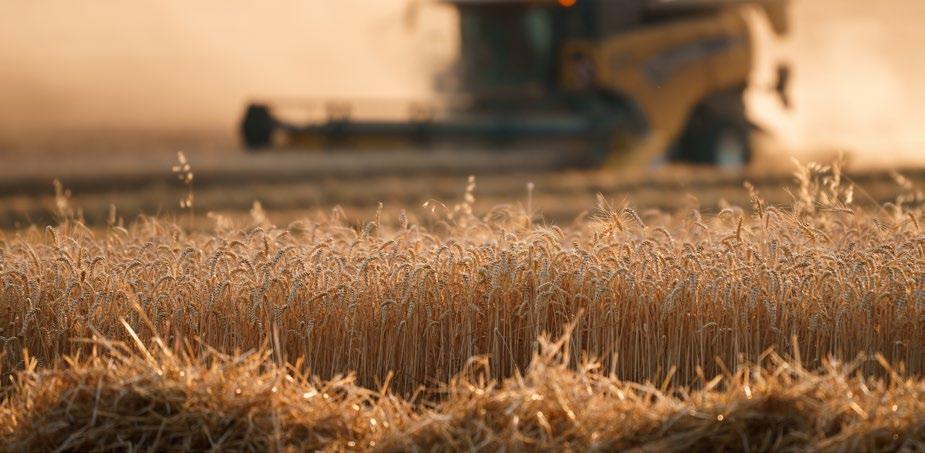
Probably the most severe space to retain diversity is seed. According to the Rural Advancement Foundation International (RAFI), in 1983, the last time this count was done, they found that about 93% of seed varieties sold in the US in 1903 were extinct by 1983. For example, commercial seed catalogs in 1903 offered 497 types of lettuce, and in 1983 the number was 36.
One reason is that, just like media and food companies, seed markets have consolidated to only a handful of cor porations. Because farms have become fewer and larger, this exacerbates the limitation of choice for seed diversity in the mainstream markets. In the case of GMO seeds, companies of ten patent the genetic code in addition to the seed itself, which means farmers and independent researchers cannot breed new varieties from that plant, and they are unable to save seed to plant next year. As a result, farmers are becoming renters of seeds instead of their caretakers.
Why can we come to these observations and conclusions re garding the importance of diversity yet fail to put our collective will into action and change our human systems?
In 1917, in response to World War I, Rudolf Steiner introduced the concept of the threefold social order, which says that healthy human communities express their humanity within the spheres of rights, culture, and economy. Steiner’s insight was that society gets sick whenever these spheres’ authority and autonomy break down. We see this in the separation of church (culture) and state (rights) or the crippling collusion of corpo ratism between government (rights) and economy.
No healthy living system has centralization. The human body is an excellent example because it consists of three distinct func
tional areas - the nerve and sense fac ulties, the rhythmic and circulatory sys tem, and the metabolic system, which comprises all the organs and functions serving metabolism. The same basic principle applies to a city in its manifest operations or a farm and its many enter prises (the basis of biodynamic agricul ture, also developed by Steiner). There is high-level collaboration and reso nance between systems in all of these scenarios, but no center.
The perspective of threefold diversity is helpful when trying to understand the angst and turmoil in the world right now, particularly around the role of government (rights sphere). Too often, the government impacts culture and colludes with corporations, while millions of people de pend financially on the government. Our human systems are critically imbalanced regarding the authority and autonomy of the rights, culture and economic spheres.
The first Constitution of the United States was called the Arti cles of Confederation, the document that coined the “United States of America”. Coming out of monarchy, there was a keen intention not to establish bodies that would undermine public will. Under the Articles, each state retained its “sovereignty, freedom, and independence”, and they put fundamental limitations on anything that undermined the power of the people, including corporations. There was a President, but they had no veto power. There were courts, but there was no Supreme Court; Congress expressed the people’s will.
But even Congress was limited; they were given the authority to make treaties and alliances, maintain armed forces and coin money. However, the central government could not levy taxes and regulate commerce. Quite a stark difference to the current moment of corporate power and the increased dilu tion of our fundamental human rights by courts, Congress, or dictate.
Even the philosophy of agriculture is centralised in the idea that weeds, pests, and disease are bad luck and that they must be killed
it is up to us to recover a healthy balance of our rights, culture, and economy
The eight years from the adoption of the Articles to the adoption of the current United States Constitution (1781-1789) is called the “critical peri od”. The history books tell conflicting stories, but this period involved a battle between the founders fighting for “sovereignty, freedom, and indepen dence” and those fighting to consolidate power through the federal government. It is interesting to note that the Constitution omits the phrase “life, liberty and the pursuit of happiness”, which appeared in the Declaration of Independence, and substituted it with “life, liberty, or property”.
The Federalist Party, an early US national political party that advocated a strong central government and held power from 1789 to 1801, was active at the onset of the US political party system. The term federalist was first used in 1787 to describe the supporters of the newly written Constitution, who em phasized federal character and a national identity for the pro posed new union.
Between October 1787 and August 1788, Alexander Hamil ton, John Jay, and James Madison wrote a series of 85 essays that appeared in various New York newspapers attributed to the pseudonym “Publius”. Known as the “federalist papers”, these essays were written to persuade the public of the want and necessity of a centralized Constitution.
The impulse for the original framing of the Articles of Confed eration, with the will of the people calling the shots through Congress, seems to be a pure representation of a healthy expression of the rights sphere, leaving the cultural and eco
nomic spheres to be worked out among the people. But the politics of the time were to consolidate power within a fed eral government that assumed some lev el of authority over the rights, culture, and economic spheres within the three newly created branches of the United States government enshrined within the Constitution.
In human history, we have repeatedly seen that once the intoxicating power of centralization takes over, it is chal lenging to walk back, as evidenced by the dysfunction of the government, culture, and economy we are experiencing today. So what can we do?
Engaging the problem involves the inner work of taking responsibility for ourselves and our circumstances and recog nising that it is up to us to recover a healthy balance of our rights, culture, and economy. It involves working together in a spirit of brotherhood to build new systems that make the existing system obsolete. It involves personal agency and no more gurus. It involves regenerative agriculture and nourishing ourselves. It involves blockchain, community rights and rights of Nature, true cost accounting and economics that can place a dollar value on the services of living systems, and so much more.
History tells us that consolidation leads to collapse, but we already know the solutions. If we choose, we can apply the wisdom of Mother Nature to claim (bio)diversity as sacred, decentralize our human systems, and seek to build life up in balance with the natural world. 3
Evan Folds is a regenerative agricultural consultant with a background across every facet of the farming and gardening spec trum. He has founded and operated many businesses over the years - including a retail hydroponics store he operated for over 14 years, a wholesale company that formulated beyond organic products and vortex-style compost tea brewers, an organic lawn care company, and a commercial organic wheatgrass growing operation.
He now works as a consultant in his new project Be Agriculture where he helps new and seasoned growers take their agronomy to the next level.What we think, we grow!
Contact Evan at www.BeAgriculture.com or on Facebook and Instagram

Bio
The perspective of threefold diversity is helpful when trying to understand the angst and turmoil in the world right now, particularly around the role of government
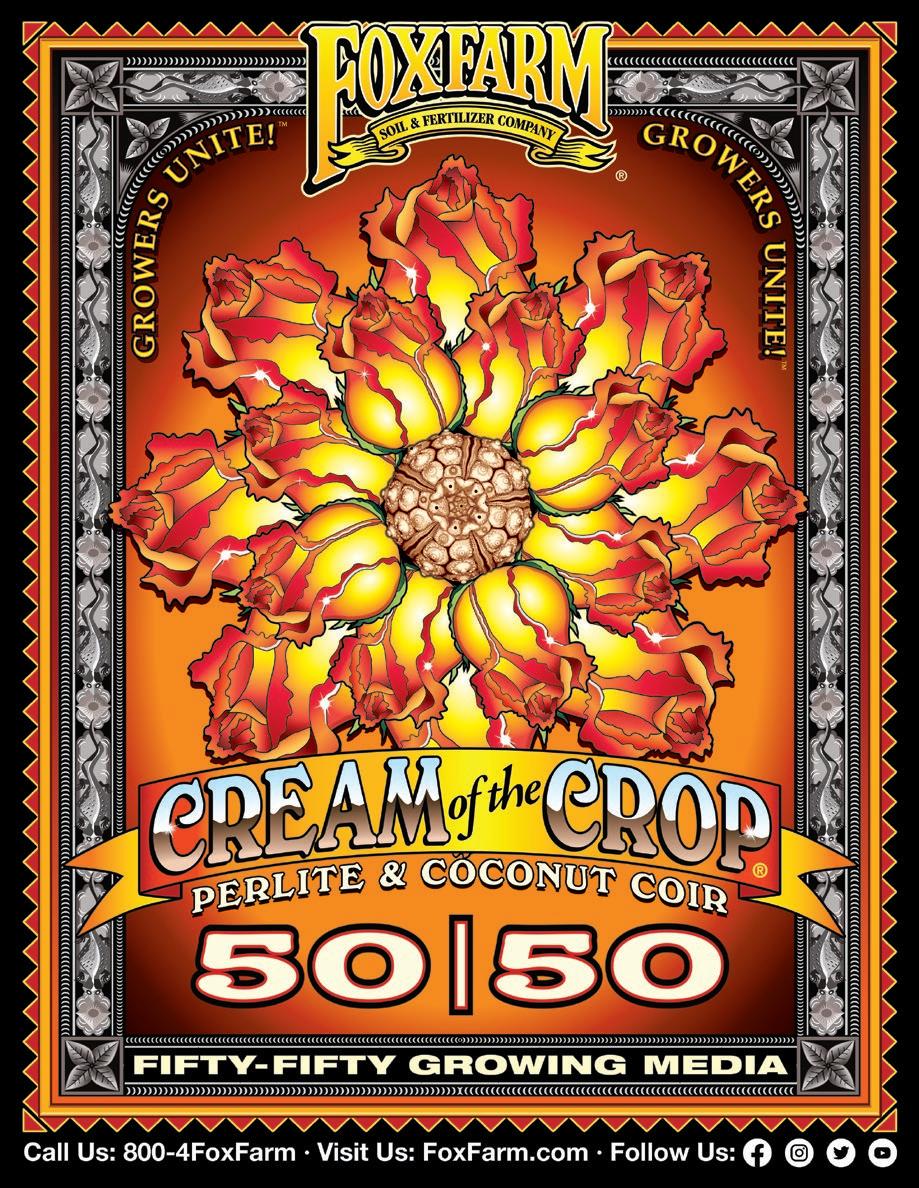
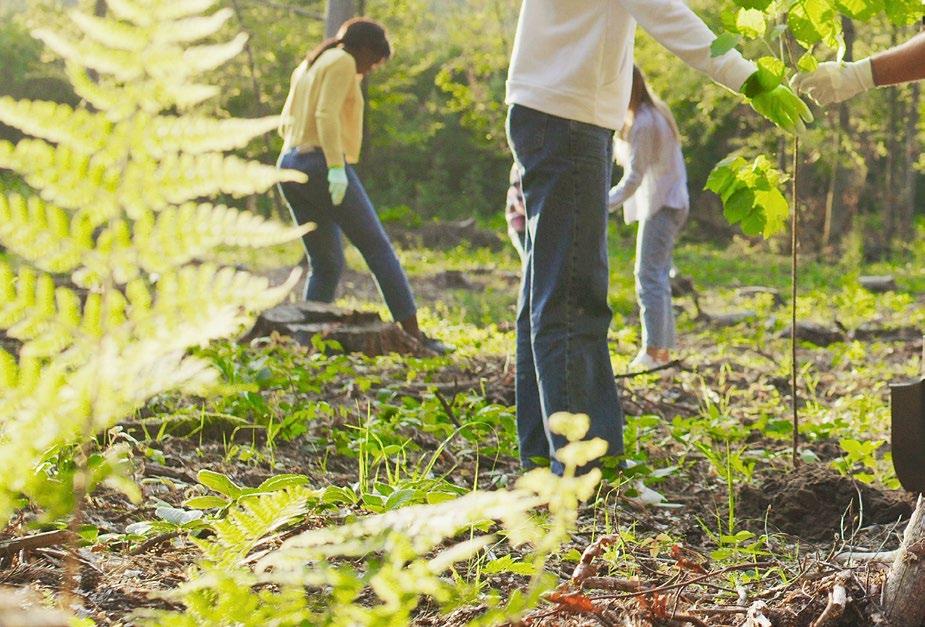
Who we are and what we do reflect our life experiences; our actions directly impact everything around us. Unfortunately, as we have grown as a culture, many have favored a lifestyle harmful to Mother Nature. This way of life has led to deforestation to make way for parking lots, skyscrapers, strip malls, fast food drivethroughs, and more. There was a time when forests, meadows and grass plains dominated the land. But today, many of the oldest trees have fallen to the sawmill. Science is discovering a wealth of information showing that without vast forests, the world cannot continue to function.
Research proves that major forests are the water pumps controlling the Earth’s weather patterns. For example, the Amazon Rainforest and the towering trees in British Columbia, Canada, were grown through time to capture carbon and transform it into hydrogen, oxygen, terpenes, beneficial bacteria and more to balance our at mosphere. Rainwater collects in the layers of carbon-rich humus; the trees and plants drink this water and pump any extra into the atmosphere, cooling our planet through beneficial synergy.
There is evidence that clouds depend on what is released from the forest to form. Rain is believed to be linked to forests hundreds of miles away! Trees help transport certain types of heavier water and bacteria over long distances. Some of these bacteria are being looked at as cloud formation catalysts.
Forests can even impact what goes on in outer space. A pulse in the forest’s plants and trees plays a role in our electromagnetic conductiv ity as a planet. The forest itself is affected by the moons, planets, stars and galaxies. There is a harmony in the greater whole of Nature that is fascinating. To observe and understand the cycles of Nature is to understand the actual order of the universe and our place within it.
We can see that the fragmenting and dismantling of Nature has had a devastating impact on our environment. A walk from a hot park ing lot to a canopy of shade in a natural forest will show the drastic difference in the climates trees and pavement provide. Trees are the cooling fins of the Earth, providing balance in the ecosystem, food, shelter, medicine and more. The forests do so much for our universe, yet modern humanity disregards them.
Trees are the cooling fins of the Earth, providing balance in the ecosystem, food, shelter, medicine and more
Humanity is responsible for removing 80% of the original forest. More than 50% of dry land is modified by humans. Massive Islands of plastic are emerging in the oceans. With unsustainable farming practices, herbicides, deforestation, over-consumption and general disrespect, the impact on this Earth caused by humans is enormous.
Our actions impact our surroundings, so what can we do as humans to help reverse the damage? Plant some trees, of course. Planting initiatives can immediately impact local ecosystems in a positive way. Some people even plant entire forests by themselves. One man named Jadav “Molai” Payeng took it upon himself to transform his island in India into an oasis by planting at least one tree a day!
One of the leading reforestation names to emerge in recent times is the Archangel Ancient Tree Archive’s Dave Milarch. Moved by a near-death, out-of-body experience, he made an “ark” of ancient tree genetics from the oldest and largest trees left on the planet to maintain and spread those ancient genes. The idea is to propagate as many champion trees as possible because they contain the DNA memory needed to make it through thousands of years of climate change. There is a dire need to change humanity’s current industrial course, and planting trees seems to be at the root of a positive change.
To date, Milarch and the Archangel Ancient Tree Archive have propagated thousands of trees and have no plans of stopping an ytime soon. Through tissue culture, cloning, and seed propagation, the team plans to soon have over 20,000 new sequoia and red wood trees rooted and ready to be put into the ground.

We are the stewards of the future. Our thoughts manifest into ac tion, so we must regard the present and future by observing the past. Having some foresight is crucial. So find some seeds, acorns, or nuts, select a safe spot, and plant some trees!
I can personally tell you how rewarding it is to plant trees with your family. The feeling of tranquility as you walk through your homegrown forest is beyond measure. You feel a connection with Nature that many never get to experience. Mother Earth is giving us every day to live; from food, water, shelter, medicine and everything else she does, it’s time to understand that it’s our turn to give back!
We all make daily choices, and those choices become a habit. So let’s get into the habit of planting trees. If the future of the Earth depend ed on who you are and what you do, who would you be and what would you do?
Mother Earth needs our help; let’s do our part. 3
BIO Tom Wall: Professional Musician, Writer and Gardening Consultant. Cosmic Knot/Therapeutic Horticulture Consultations.
Growing up on a deer farm located on 79 acres of land along the banks of one of Lake Michigan’s tributaries, Tom grew a love for nature and all the beauties it could hold. Through that passion Tom has channeled his influences into edu cating the community on sustainable agriculture, becoming an activist, writing for magazines and creating music tuned to nature in his band Cosmic Knot.
Follow Tom and all of his passions: facebook.com/tom.wall.946 instagram.com/cosmicknotmusic/ artistecard.com/cosmicknot
Humans constantly pollute the planet and turn once flourishing spaces into toxic wastelands that can no longer be used to produce food, graze animals, or for infrastructure. Even though plants can grow in polluted soil, the levels of toxins found in them later can be harmful to humans. Beyond land, water and other types of media can also be polluted. The pollution can vary from heavy metals such as zinc, nickel, lead, and aluminum to chlorinated solvents, hydrocarbons and pesticides.
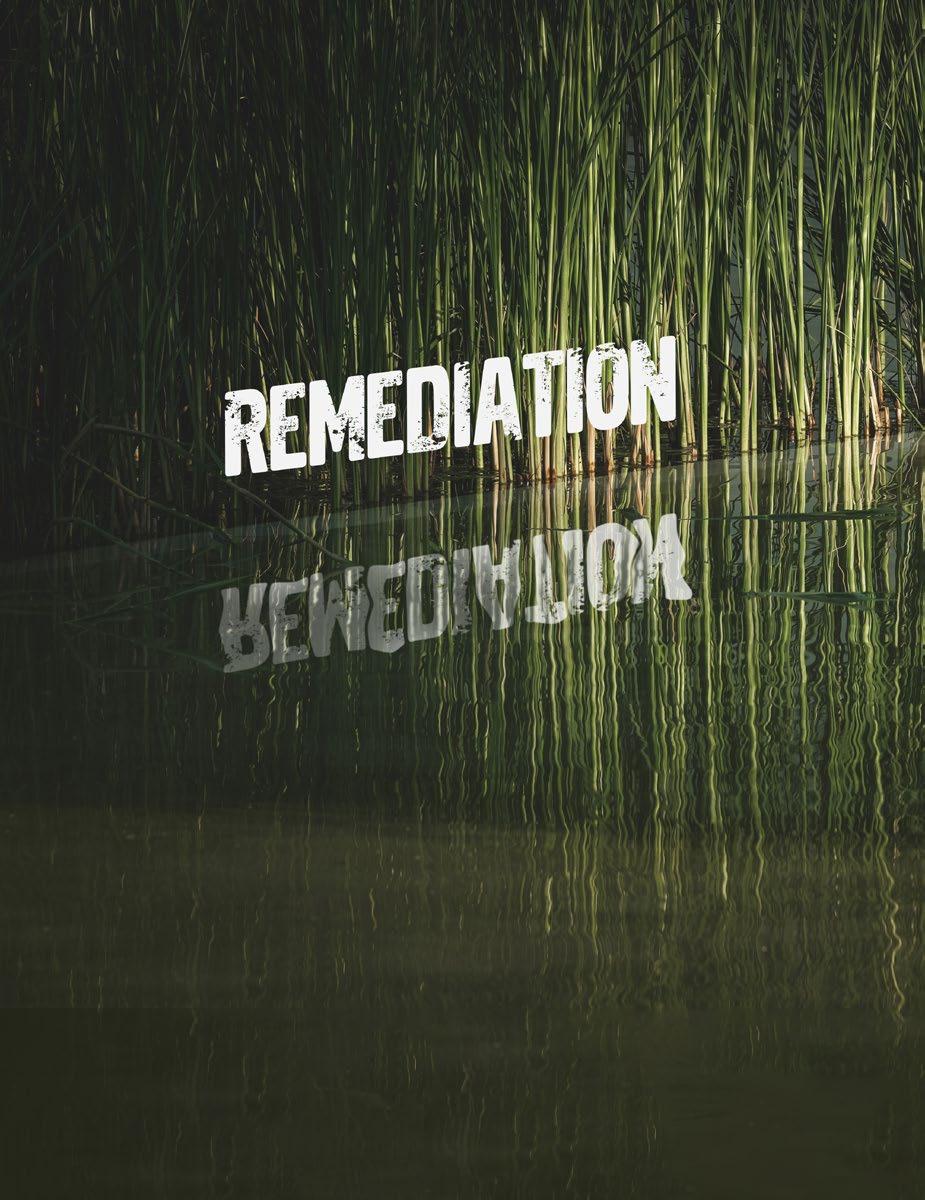
So how do we tackle this ever-increasing problem?
Remediation is the answer, a process de fined as reversing or stopping environmen tal damage. Many different methods exist, each of them offering numerous pros and cons. So, let’s take a look at a few funda mental remediation techniques.
Phytoremediation involves using plants to remove pollutants such as pesticides, petro leum hydrocarbons, metals, and chlorinated solvents by extracting and binding these compounds. Some varieties of plants will grow in polluted soil. However, their yield, health and general vigor are massively compromised, and crop failure is inevitable. Luckily, some plant varieties are happy in polluted land and help remove heavy metals and other pollutants from the soil. Plants known as hyper accumulators uptake more of an element than they require for nu tritional purposes; they tolerate levels that typically kill other plants. They absorb the metals and store them in their tissues. Broccoli, for example, is used to remove selenium. Willow trees can remove many compounds through phytoremediation; Alder and Poplar are particularly useful for cleaning engine oil from the soil.
We can break down hydrocarbon pollutants by increasing the ox ygen in the soil. Oxygen levels are boosted by turning and plowing the ground or with high-pressure air injection. The downside to oxygenation is the increased production of volatile organic com pounds, which have their own issues. On the plus side, this meth od increases the microbial content of the soil, which helps break down other pollutants. We can also apply hydrogen peroxide to water and soil to oxygenate and increase the rate of hydrocarbon breakdown. However, this product is a commonly used sterilizer and kills all the beneficial microbes in the ground.
Microbial Bioremediation is one of the more sustainable and cheaper methods of remediation. As the name suggests, it in volves using microorganisms to break down contaminants. These microbes consume the pollutants as a food source, breaking them down for nutrients. Nutrients are often needed to optimize the microbial rate of remediation, while buffers maintain the pH and other additives, such as vitamins.
Mycoremediation is similar to microbi al bioremediation but employs fungus exclusively. Fungi produce and excrete digestive enzymes that allow them to absorb nutrients from the surrounding area. In addition, specific fungi produce enzymes that break down contaminants such as pesticides, hydrocarbons, and heavy metals and are, therefore, exploit ed for bioremediation.
Naturally occurring compounds such as humates, gypsum, ammonium citrate, and seaweed extracts are all recorded as agents that can be applied to the land to aid in remediation, but that is a story for another time. 3
We have only scratched the surface when it comes to re mediation. Other methods include:
• Thermal desorption
Excavation or dredging
Surfactant enhanced aquifer remediation (SEAR)
Pump and treat
Solidification and stabilization
In situ oxidation
Soil vapor extraction
Nanoremediation
Remediation is the answer, a process defined as reversing or stopping environmental damage

Phytoremediation involves using plants to remove pollutants such as pesticides, petroleum hydrocarbons, metals, and chlorinated solvents by extracting and binding these compounds

Issues like climate change can feel inhuman and overwhelming like there’s simply no way any of us can begin to grasp the problem
Thelargest known living thing on Earth is an Armillaria fungus spread across 2,384 acres of Oregon. I don’t know about you, but I find that difficult to imagine. It’s just... too big. However, send me out in that expanse with a trowel and a microscope, and I feel like I’d have a much better chance of wrapping my head around it, one slide at a time. Seeing the mycelium in action, barely-there threads inching their way out to infest every millimeter available, puts it all into perspective.
Let’s talk about scale. Issues like climate change can feel inhuman and overwhelming like there’s simply no way any of us can begin to grasp the problem. But my recent experience with a couple of local projects speaks to how seemingly insignificant actions can effect lasting change.

Calderdale, the picturesque valley where my town and several others nestle, is fa mously wet. This is usually excellent, as our wood land flourishes, and the ducks have somewhere to pose for Instagram reels. But now and then, the rain holds long enough to satu rate all the soak points, and floods inevitably follow. This has been going on for millennia, but in recent decades, a combination of accelerating urban development, poor moorland management, and the hangover from misguided Victorian culverting has led to more frequent and more devastating floods. In 2015, we had the worst in history, with some parts of the river, which usually amble along at knee depths, suddenly becoming seven-meter-deep raging torrents. It changed all of us – the flood sirens still howl several times a year, but those who remember neck-deep water on Market Street cringe at the sound much harder these days.
In the face of such power, it’s easy to feel overwhelmed, but a group called Slow The Flow Calderdale has taken small but meaningful steps to chip away at the risk. The initia tive’s leaky dams (creating a series of pools along water courses so that heavy rain has more places to collect) and water storage areas seem to have a measurable effect. Just before Covid made the world a crazy place, we were again hit with similar levels of rain to those seen in earlier catastrophic flood events. However, we mostly escaped with wet floors this time rather than ruined homes and livelihoods.
It’s about chipping away at what we can do rather than obsessing over the craziness of the big picture. It’s worth remembering that all of the problems we’ve created for ourselves boil down to human-sized actions. For example, the can of 80s hairspray that tore through the ozone layer,
the soda bottle in your life for minutes but in the ocean for centuries, or the choice to drive three minutes to the shop instead of walking for ten. Even the industrial activity that creates most pollutants only happens in response to demands that we, the consumers, make. We made it happen one per sonal decision at a time - but it stands to reason that cu mulative action can work the other way too. Consumer choice and democracy are essentially the same things.
Of course, in any effective democracy, it’s essential to make your voice heard. Historically, the loudest voices in the debate around climate and ecology have been mostly those who insisted that it should be filed under titles like ‘progress’ and ‘development.’ From Genghis Khan’s army leaving still-poisoned land all across Asia because of their metalworking to the Exxon Valdez and similar spills (which one might think would lead to effective change in oil in dustry legislation), concerns around the destruction of the ecosystem have been mostly shouted down in the name of greater human need. No one is suggesting it’s a simple good-vs-evil discussion. Even in the internet age, there are strong arguments in favor of continuing to fight hunger and poverty in the developing world. But, as time goes by, the gains inevitably become smaller, and the costs rise. The consequences of pesticide and weedkiller overuse are only beginning to show themselves. Still, we’ve accidentally col lected all the best wood for the fire in building ourselves a nest of the nicest branches. And so new voices come into the debate; the megaphone of money can only shout for so long over the voices of millions demanding change.
My current favorite example of this shifting popular world view is local to me (you may be spotting a theme in my writing) and established by a community group. Five years of campaigning to save an old, dilapidated college building from demolition resulted in Todmorden Learning Center and Community Hub gaining a fantastic facility, which they immediately decided (influenced, no doubt, by the flooding and moorland burning) should include an entirely new col lege dedicated to teaching skills relevant to this new era.
Consumer choice and democracy are essentially the same things

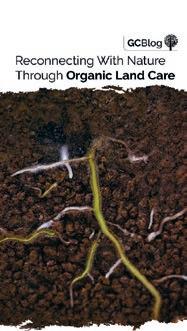


Our blog is where we bring you more than we can cover in our print issues; timely news, growing tips, and great ideas. Hundreds of growing articles are waiting for you.

Todmorden Climate Chal lenge College’s flagship course has the refreshing ly hopeful title of ‘Green Futures.’ Intending to lead people to real work in what are expected to be growth industries, the focus is on energy use, wa ter management, and food production. Meanwhile, it also strives to teach a broader understanding of the themes of sustainability and permaculture. The course comprises modules on straw bale building, flooding and land management, indoor growing, and renewable energy, all familiar enough disciplines but approached with a fresh eye for sustainability rath er than pure output. Many signs of this innovative out look are on show, from the prevalence of gravity-fed watering systems and top-of-the-range LED lights in the classroom to one student’s inventive approach to design ing a permaculture-themed video game. Both projects sit happily alongside others on making cordage from nettles and growing ‘leather’ from fungus. High tech and low tech in symbiosis – this must surely be the shape of the solu tions we need.
Those in industry certainly seem to think so. A few days ago, I was surprised to find that the live, growing lettuce I bought from a local shop proudly wore a badge proclaim ing itself to be ‘grown hydroponically in the UK – helping

to reduce water consump tion’. Two years ago, hydro ponic growing was considered more of an exotic delicacy. As well as the obvious Spanish polytunnels, Covid killed off a mouthwatering invitation I’d had to work with an African hydroponic farm, set up by someone who had cut his teeth on growing projects in UK subway tunnels. This year, though, it seems like barely a week goes by without a story of a new UK-based hydro facility opening in Bedford shire or Kent, or, remarkably, Scunthorpe (Sorry Scunthorpe; ‘Industrial Garden Town’ you may be, but it’s still surprising to hear that you’ve shift ed from steel to salad. Well done!).
Like Oregon’s mammoth fungus, there’s a creeping shift happening at every level. The scale is often too big to grasp, but we can still play our small parts, trowels and micro scopes in hand. We may feel that we, the smallest of hyphae reaching for the next speck of nutrients, are insignificant to the mass of life all around us, but it’s by these microns of movement that the 2,384 acres have been covered. Just keep digging. 3
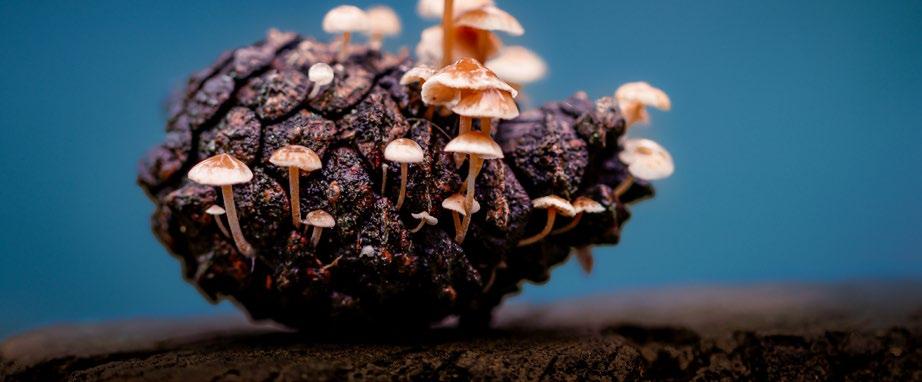
BIO Martyna Krol is a vegetable grower, natural bee keeper, and edible spaces designer. She is a lover of all soil and urban farming techniques and is the former head of growing at Incredible Aquagarden.
Scott Hutchinson is a writer, editor and enthusiastic mans plainer.Allotment hammock appreciator, soldier-turned-mu sician and occasional clown.

Like Oregon’s mammoth fungus, there’s a creeping shift happening at every level.
It’s about chipping away at what we can do rather than obsessing over the craziness of the big picture.








































































































































































Is the shortage of salad greens at the local supermarket getting you down? While they may seem simple, these greens boost flavor and nutritional value in any meal. So why not grow them at home? You don’t need much space, time or even a large budget to produce a couple of bags of organic salad mix a week.
Find a spot in your house or yard that isn’t subjected to extreme heat, wind or other adverse conditions but receives enough sun light to support fast, healthy growth.
Most houses and apartments have at least a windowsill with good morning light. Kitchen windowsills are often well-lit, incredibly convenient, and can look super cool! Or perhaps the best spot is a corner of your balcony or patio. If you don’t have any well-lit areas, you can produce greens directly in your pantry or a spare room with some small grow lights.
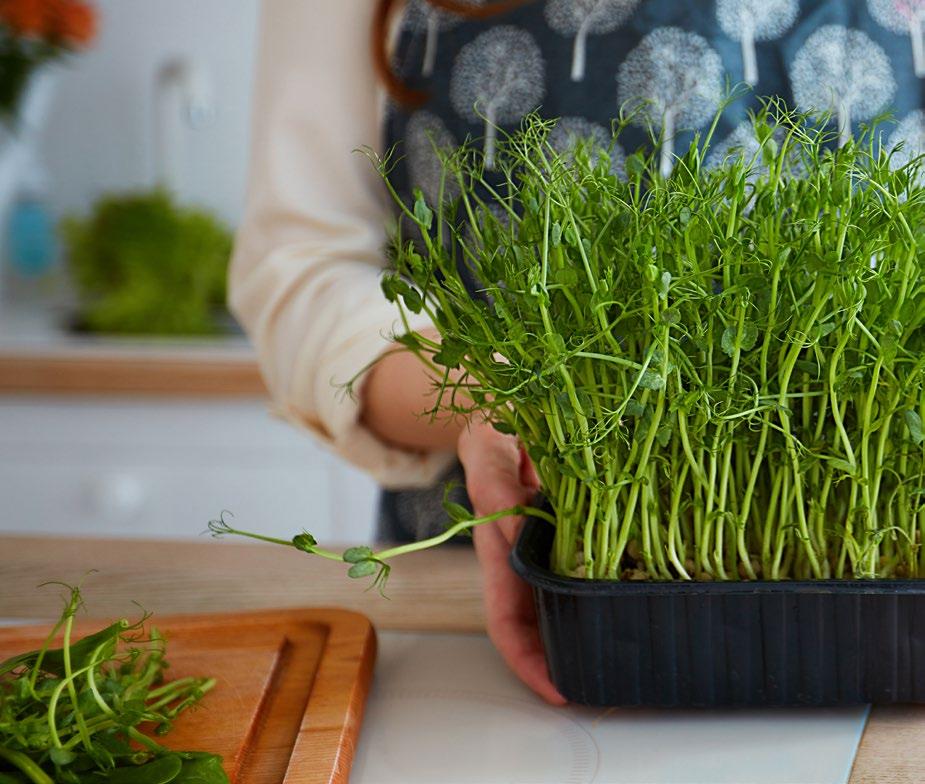
Once you have your spot, you’ll need some containers to hold the soil. These containers should be big enough to give the plant’s roots plenty of room to spread out. However, the pots don’t have to be huge. Most salad greens are reasonably shallow-rooted. You can even opt to grow plants in tiny containers as microgreens and harvest them as seedlings!

Long rectangular containers are preferred for many windowsill gardens. Aim for something at least 20cm deep by at least that wide for growing plants beyond the microgreen stage. You may be limited in what you can fit on your windowsill, but in the case of balcony gardens, 25 to 50-liter pots work great, and you can often grow various plants in the same pot.
Fill your chosen containers with the best soil you can afford; it should be fortified with good quality organic ingredients and drain freely. These plants have simple requirements and mostly crave nitrogen. Nitrogen-rich organic fertilizers, like blood meal, feather meal, or fish amino acids and hydrolysate, can be applied when watering to supplement the plants and boost the growth rate.
The best part is deciding what you want to grow! Choose greens you know you like, but don’t be afraid to have some fun and grow weird and wonderful varieties that aren’t available at the local grocery store. Invite some friends to grow alongside you; every one selects different plant varieties. There is something special about sharing surplus seedlings and products with others. The more people who grow, the more sustainable we will be! 3
BIO Cody is the owner of High Powered Organics and a second-generation Australian grower with more than a decade of expe rience in the horticulture industry. Cody works closely with growers locally and abroad, creating organic solutions for high output cropping. He achieves maximum results by combining aspects from permaculture, biodynamic farming, and Korean natural farming techniques. Cody’s main focus is finding natural, and sustainable ways to produce high-quality plants with a minimum of input.
You don’t need much space, time or even a large budget to produce a couple of bags of organic salad mix a week

The number one practice that will add power to your Integrated Pest Management (IPM) is scouting. I often see professional cultivators fall into a pattern of reactivity instead of proactivity, and it’s a bummer because there are steep consequences from delayed detection of problems. Usually, you could have avoided the whole thing if you had found the issue earlier. Scouting will stop that vicious cycle!
Take notes, keep the notes, and refer to the notes. This could be as simple as a journal or as complex as a database, but you need notes so you can remember exactly what kind of conditions were present when you encountered an issue. Jot down the weather and environment, plant health observations, and pest counts.
The technical term for this is making a “transect”, but you will need a naming system to define your garden spaces. Divide your garden into sections or give distinct areas silly, unique names. It can be simple, complex, serious, or fun; it should be whatever makes sense for your space. That way, when you take notes, you can communicate where you find the issues.
A general rule for crop health observation is to go from big to small. Observe the transect area as a whole, and then observe on a plant level. Scan areas for differences; our brains are very good at doing this comparative work. Look for color, size, and shape differences. Scan across the entire crop, the transect area, or the entire plant from the top to the crown and roots. Magnification is another powerful tool for scouting. A hand lens and/or dissecting microscope are crucial to getting your eyes onto an even smaller level of plant observation.
Randomly select the plants to scout individually. Most of us don’t have the luxury of looking at every plant in our garden, so you will have to choose a representative set of plants to look at more closely. Want to get fancy and make sure you eliminate bias from your plant selection? Have a standard numbering system for your plants (ex., the southeast most plant is always 1, and you always count from east to west), then use a random number generator to select a specific plant. You can find many free ones online. Then examine randomly selected plants to put through a more thor ough plant-level scouting protocol.
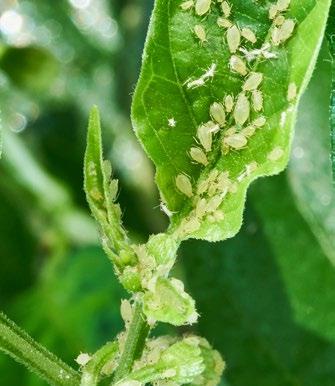
Counting pests is one of the most effective and simple ways to monitor how a population of an insect changes over time. There are several methods for insect counting. You could use a beat
cloth, paintbrush, and tray to shake/ brush loose insects and collect them for identification. Leaf samples can be taken, and insects counted under a dis secting microscope. You can use a hand lens to identify insects in the field. Sticky traps are another tool to help you identify and measure flying insect populations. After you decide which pest counting methods you want to use, conduct pest counts on your randomly selected plants and be sure to record your numbers so you can use them for future comparison.

Watering, moisture monitoring, pruning, and trellising are all touchpoints with your plants and moments you can use to examine plant health



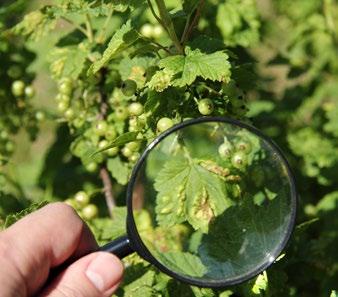
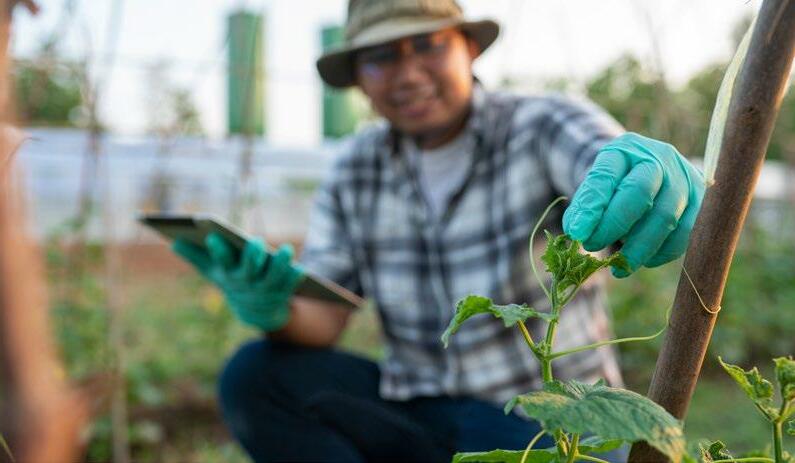
Know Your Enemy. An organism’s life cycle will always provide clues for prevention, detection, and identification. Knowing an organism’s parameters to thrive and unique identifiers of its life cycle will take your scouting to the next level.
For instance, with the dreaded powdery mildew, the tempera ture range for infection is between 68 to 77°F, and relative hu midity between 40 to 100% is sufficient for the spores to ger minate. Diffused or low light will also favor powdery mildew development. These life cycle parameters are why air movement in the lower canopy and good pruning practices are necessary to protect susceptible crop types. If you can’t keep it hot and dry, you must watch for those little infection spots to pop up.
Unique life cycle observations can provide conclusive details for identifying a pest. The broad mite, for example, has unique eggs. They are oblong and covered in polyps. Also, the males will carry around the dormant females on their back, which is a dispersal mechanism for this pest, but also a BRILLIANT clue that you are looking at the infamous broad mite.
Knowing an organism’s parameters to thrive and unique identifiers of its life cycle will take your scouting to the next level
Develop an observation habit when caring for your garden. Al ways be scouting. Always be vigilant. Watering, moisture moni toring, pruning, and trellising are all touchpoints with your plants and moments you can use to examine plant health. If you work with a team and everyone is in this mindset, you have sever al eyeballs in the garden instead of just one person and their weekly scouting protocol. Give the freedom to team members to capture pictures or videos of symptoms or flag out areas that need further inspection.
Scouting is an art; not all the tools or methods will be needed for every situation. Scouting practices are vast and many, specific to pressures, crop types, climate, and how a farm/garden oper ates. These guidelines inform the mindset needed to create an effective scouting practice. So, don’t be intimidated and don’t think of scouting as a rigid, uber-technical thing. Instead, think of scouting as learning the story of your garden ecosystem and be comforted that you will be navigating the challenges with a solid foundation of facts. 3
Joanna Berg is a Certified Professional Soil Sci entist specializing in pest and disease diagnosis and integrated crop management solutions through her firm in Northern California, Dirty Business Soil, LLC.Take notes, keep the notes, and refer to the notes
In the land of the midnight sun, regenerative agriculture’s holistic approach to land management is restoring fragile connections between soil, food, people, and climate.
Located north of the 60th parallel and including both sub-artic and artic land, the Yukon is the most westerly and smallest of Canada’s three northern territories

Yukon’s Farmer of the Year in 2019, Sarah Ouellette, operates a small quarter-acre market farm near Lake Laberge, south of Whitehorse. In 2021, this small plot of land yielded a whopping 16,000 tons of fresh produce. A good crop, she says, is all about good soil -- a concept that is top of mind in the Yukon.

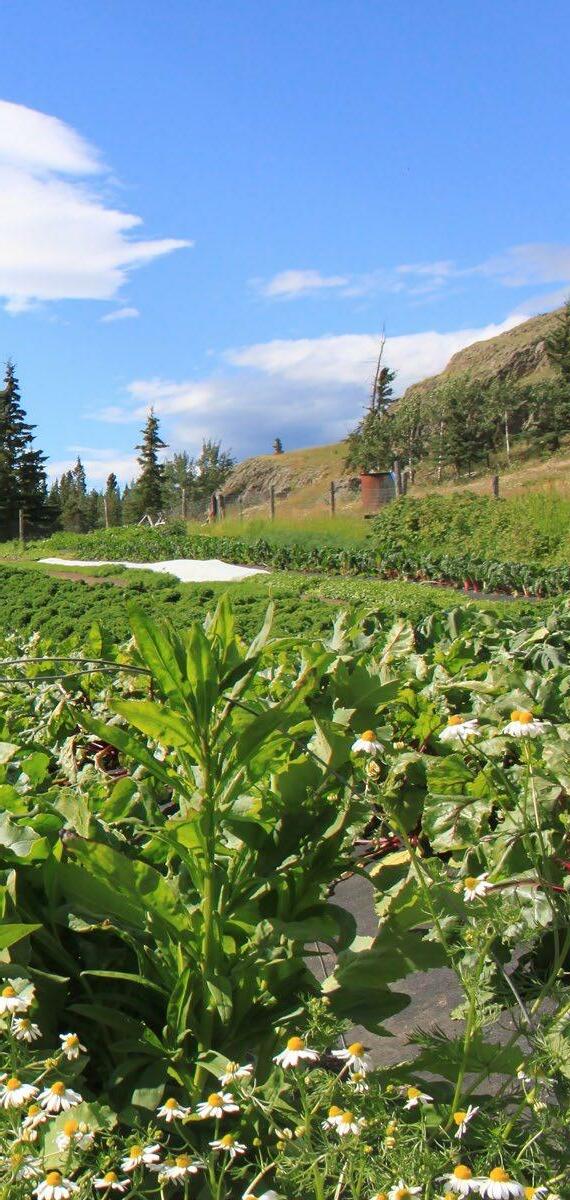
Located north of the 60 th parallel and including both sub-artic and artic land, the Yukon is the most westerly and smallest of Canada’s three northern territories. In the south, around the capital of Whitehorse, the area is dry, receiving only 255mm of rain annually. The soil is sandy, and hay is the crop of choice and the number one driver of the agricultural sector due to its pref erence for arid conditions.
The Dawson City region is further north, 240 km from the Arc tic Circle. This area escaped glaciation during the last ice age, and the soil has had thousands of years to develop. The convergence of the Klondike and Yukon Rivers has created a flood plain of nutrient-rich sediment. But it’s not all kale and chard.
The growing season is short. Spring thaws in the Yukon don’t typically come until mid to late May. August frosts have been known to wipe out crops primed for harvest. Twenty-four hours of daylight in the summer transitions to almost total darkness in the winter when temperatures can dip to below -40°C, causing erosion that voids the soil of nutrients needed for growth. Only 4% of what the small population of 43,000 consumes is grown locally.
Climatologists and researchers estimate a warming planet could extend the growing season and increase food security. They es timate that 4.2 million square kilometers of new sub-artic and prime circumpolar farmland could be created within the next 60 years [1]. But they’re also urging vigilance.
During photosynthesis, plants take in carbon dioxide from the air. As they die, their roots release a sugary liquid, feeding millions of tiny underground microorganisms which release CO2 back into the atmosphere. This inhale and exhale cycle has become un balanced north of the 60 th parallel. Decaying biomass, microbes, and other organic matter have remained frozen underground for millions of years in a sub-layer of soil known as permafrost. As the planet warms, this layer has begun to thaw. As a result, eons worth of CO2, methane, and other greenhouse gasses are being emitted into the atmosphere. This is further complicated by the peat soils and boreal forest of the region being amongst the most significant carbon reserves on the planet. Cutting down swaths of trees to create pasture, heavy tilling, and conventional agricul tural methods that drain wetlands for irrigation and use chemical fertilizers and pesticides will release more carbon and inhibit the soil’s ability to sequester it.
Project Drawdown [2] is a leading resource on climate solutions and points to regenerative agriculture to preserve microbial life and create the moist soil structure needed to lock in carbon. Regenerative principles include minimal tilling of the soil, organic compost, cover cropping, plant diversification, and using livestock to prepare the land for growing. These practices enhance the soil’s ability to bind and sequester carbon, and in the Yukon, this makes a significant difference.
On Ouellette’s farm, weeding is gently done by hand. Any impu rities that hinder the soil’s ability to store carbon, such as herbi cides or chemically engineered soil amendments, are forbidden. In addition, companion planting alongside cabbage and herbs attracts pollinators and soil enhancing insects.
In the valley below Mt. Logan, also in the Whitehorse region, sits Wilderland Botanicals. The co-founders and brother-and-sisterteam, Lauren and Craig Blackburn, are strong advocates of re generative agriculture. Craig recalls Lauren’s first farm. She chose a rocky, arid slope in Keno City, 335 km north of Whitehorse. People told her she wouldn’t be able to grow anything, but her lettuce, he says, was double the size of basketballs, and the soil it grew in was firm and moist. Blackburn says the star was a compost of tea leaves and animal manure. The secret ingredient, biochar, made by burning organic material from agricultural and forestry wastes at extremely high heat, is used to reduce soil contamination. Biochar enhances carbon sequester and the soil’s ability to retain water.
A good crop, she says, is all about good soil -- a concept that is top of mind in the Yukon





In regenerative farming, a continuous living web of roots capable of holding water, soil, and carbon in place helps prevent soil fatigue and decrease stress on microbial life
In 2014, the Tr’ondëk Hwëch’in (TH) First Nation formed a mem orandum of understanding with Yukon College (YC) / Yukon Re search Center (YRC) [3] for the development of a working and teaching farm along the Klondike River, just outside Dawson City. YRC’s recommendations for growing in an artic shoulder environ ment included organic cover cropping to protect the soil from win ter erosion, green manure and plant tissue to improve soil structure, crop rotation, and farm livestock to prepare virgin land for planting. The animal manure and crushed grass composts from grazing add organic matter to the soil and increase microbial activity.
The result is a harvest of fresh produce supplied to Dawson City and Whitehorse restaurants. Food is also flown to communities north of the Arctic Circle, and during the growing season, the nu tritious crops also go into weekly produce boxes for elders in the community.

TH Farm has been added to the Yukon government’s list of farms that will assist the territory in meeting its agriculture strategies as summarized in its 2020 Agricultural Policy, Cultivating our Future [4] The main objectives are to support the agricultural economy with diverse, competitive, and innovative infrastructure and ensure that new agricultural land is protected, resilient, and sustainable. The land must also adapt to the challenges of climate change, follow best practices that protect the environment and farm, and foster partnership and community collaborations.
When European settlers introduced farming to the Yukon, they tilled the land and created small food-producing hubs around set tlements and residential schools. It began a shift in the traditional way land and soil had been managed for millennia. From its con ception, TH Farm’s goal has been to use its 80 acres to restore and preserve an Indigenous way of life, nurturing an economic and spir itual relationship with the land. A healthy soil teeming with micro bial life provides local produce, native plants, and shrubs essential to the sustenance, healing traditions, and culture of the Tr’ondëk Hwëch’in. Farm Manager, Derrick Hastings, says it’s a place that takes old and new ways of farming and creates a hybrid that works for everyone. In Hän, the language of the Tr’ondëk Hwëch’in, the farm is called Nänkäk nishi tr’ënòshe gha hëtr’ohǫh’ąy, meaning, “land where we learn to grow our food”.
At Wilderland, it’s also about a healing relationship with people and soil. Rhodiola is being grown commercially for its healing qualities, including decreased anxiety and fatigue. The herb takes five years to grow from seed to maturity, and its roots ruminate underground. In regenerative farming, a continuous living web of roots capable of holding water, soil, and carbon in place helps pre vent soil fatigue and decrease stress on microbial life.
Executive Director of the Yukon Agricultural Association, Carl Bur gess, says he’s optimistic about the growth of farming in the Yukon. Regenerative farmer Sarah Ouellette feels the same way. She’s ex cited when she sees the ground covered with the castings of red wrigglers, one of the world’s most common composting worms. She takes it as a good sign that the soil is healthy, doing its job, and that she will be able to grow more food for her community. 3
1. The environmental consequences of climate-driven agricultural fron tiers | PLOS ONE (bit.ly/3t73DJ3)
2. Regenerative Annual Cropping | Project Drawdown (drawdown.org)
3. emr-agriculture-state-of-the-industry-2013-2017.pdf (yukon.ca)
4. Cultivating our future: 2020 Yukon agriculture policy | Government of Yukon (yukon.ca)
• 5 MICROBES | SOIL CARBON KEY TO SUSTAINABILITY (tedthe floys.wordpress.com)
• Tr’ondëk Hwëch’in Teaching and Working Farm | Yukon University (yukonu.ca)
• Soil Classification and Distribution – Digging into Canadian Soils (us ask.ca)
• Canada’s Carbon-Sequestering Soil Environments - Agriculture and Agri-Food Canada (AAFC) (sis.agr.gc.ca)
• Regenerative Agriculture in the North | Canadian Organic Growers (cog.ca)
BIO Jennifer Cole is a writer and garden enthusiast with a bachelor’s degree focused on history from Simon Fraser Uni versity, and a freelance writing career spanning two and half de cades, Jennifer lives in Vancouver British Columbia. Her by-lines have regularly appeared in the opinion section of the Toronto Star and her portfolio includes articles in various newspapers, magazines, and websites across Canada. When not writing her own blog or visiting local garden centers, you can find her put tering, planting, and nourishing her own urban garden oasis.
In 2021, Sarah Ouellette’s small quarter-acre market farm yielded a whopping 16,000 tons of fresh produce.




Marginalized Young People Gardening
and the Benefits of
We are the product of our environment. The space around us shapes us; it can liberate or confine us. Humans have the intelligence and ability to alter space and choose the environment. But whether we have the freedom to is a different matter.
Working with children and young people for almost 20 years has been enlightening on this front. Students learn in different environ ments, from small classrooms in inner-city housing estates with 30-plus children to privileged international schools with only a dozen students in each classroom with many resources. Learning opportunities are also available in forest schools held in outdoor environments and community gardens.
Overall, the young people I work with have limited academic suc cess. Often, they have been labeled at a young age, their behavior not in line with what is deemed right and good. There has been a marked increase in diagnosis and awareness of ADHD (Attention Deficit Hyperactivity Disorder). Negative behaviors can also result from being brought up with challenges many of us never experi ence, particularly those relating to chronic poverty. Other issues include absent fathers, relatives in prison, mothers with drug and alcohol addictions, and siblings drawn into gang culture. The young people may be carers within their dysfunctional units. Many are sleep deprived, poorly fed, and badly clothed. Sadly, they may have been experiencing this from when they first entered the school system at five. By age 14 or 15, that’s a decade of being mistreated and misunderstood.
Choosing to care for something may be beyond them because they have been neglected. In the gardening world, we can give young people choices, not difficult ones with far-reaching conse

quences or pressure of being right or wrong; low-risk choices within the pa rameters of seasons, weather, and time (all of which are out of their control, anyway).
We ask the children to choose what they want to do in the garden. We want them to decide what they want to plant and think about a favorite vegeta ble they would enjoy growing. Potatoes and peas are always favorites; the joy of chips and mushy peas in Northern England!
Learning opportunities are also available in forest schools held in outdoor environments and community gardens
We ask them to think about their favorite colored flowers and which they think the bees and butterflies enjoy most. Then, we ask them to consider what materials are needed to make these plants grow, such as soil, water, and light.

When a student is having a bad day, we offer the opportunity to saw wood, hammer some nails, or fill wheelbarrows with woodchips. These are all practical skills that can spark positive endorphins into action.
The students use their creative thinking skills and feel strong and productive. Great satisfaction is found in getting a job done and doing it well in the great outdoors.
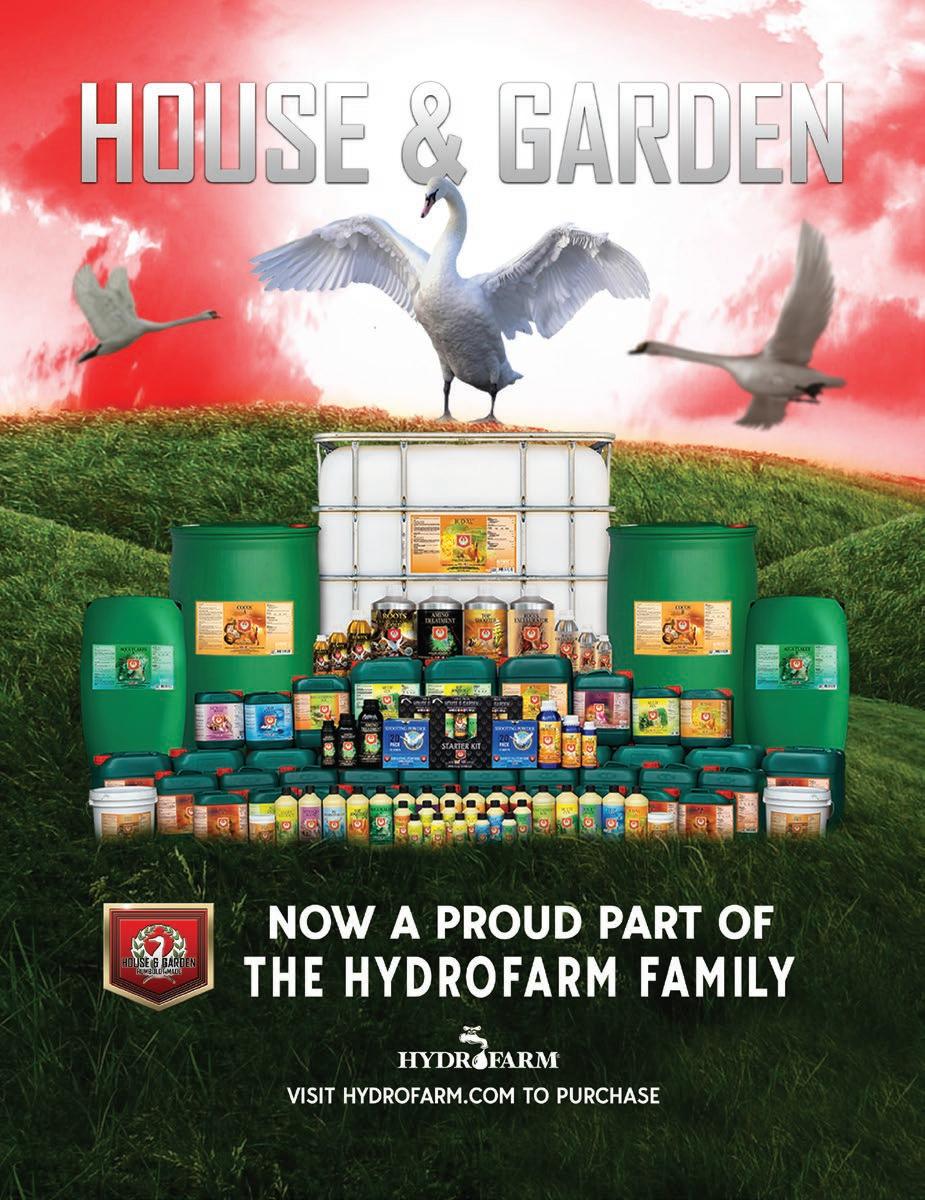
The garden offers small steps to learning what can make you happy and feel good about yourself. Plus, there’s the added bonus of gorgeous fresh peas to enjoy after harvest
One Friday morning, a local high school’s Alternative Provision unit visits the gar den. A 14-year-old girl who has been at tending the school for 18 months is often angry or frustrated about something she doesn’t want to talk about and is reluc tant to catch anyone’s eye. But her frus tration quickly dissipates once she’s in the garden setting and treated like a young adult. There is no need to call me ‘miss’ or be deferential. I ask her how she feels about going into year ten. She tells me she can’t wait to graduate and hopes to be an engineer. I tell her she has the skills, brains, and ambition and can do it. She’ll have to pass a few exams, but the garden sessions help her focus on what she wants.
Reluctant to touch the soil at first, squeamish of worms and woodlice, they proceed with impressive care to prick out the fragile pea seedlings, delicately cradling the plants in their awkward hands
tive. The lads go with her more mature outlook, and they all settle into their tasks. Reluctant to touch the soil at first, squeamish of worms and wood lice, they proceed with impressive care to prick out the fragile pea seedlings, delicately cradling the plants in their awkward hands. Digging holes with their trowels, planting the root ball and carefully covering it with soil, they work their way around the canes.
The other students are all boys with varying degrees of bravado on display. One of them is intimidated by this new, unknown en vironment. They get their teenage chat and tales of the bad stuff happening out of the way. Then I give them a few options rang ing from manual graft to the more calm activity of planting some seedlings. Thankfully, they go for the latter. I suspect it’ll be most beneficial on this particular day.
The potential engineer eyes up the garden canes on hand, finds the ball of twine, and decides what tools are needed. The group chooses a spot on a raised bed and makes a sturdy structure with little guidance from the adults. She has the vision and the initia

Within 15 minutes, the attitudes are gone. They’ve stopped talking themselves up or putting themselves down. A calmness descends, and with it comes a tendency to help each other. And when the hour is up, they are left with the quiet satisfac tion of learning and achieving a new task.
Later that afternoon, I received an email from the staff mem ber who coordinates these visits, thanking me for the day and telling me how the students returned to school happy and smiling. For teens who are on the margins, who face daily dif ficulties and have been cast out within their own school and society, this is what it’s all about. The garden offers small steps to learning what can make you happy and feel good about yourself. Plus, there’s the added bonus of gorgeous fresh peas to enjoy after harvest. 3
Bio
Emma Carter developed a passion for nature and plants as a child thanks to having a keen vegetable grower as a Dad and the encouragement to run wild in rural England. As an adult, Emma enrolled in an Introduction to Permaculture course and qualified as a Forest School leader. She finally acquired her own allotment in 2015, eager to grow and learn about environmental sustainability while reaping the endless physical and mental health benefits gardening offers. After a year of working at the Incredible Aquagarden in Calderdale, she now manages an acre permaculture community garden in Lancashire. Emma is happiest with her hands in the soil surrounded by birdsong, with a pencil and pad to scribble down ideas and observations of the world around.

the home garden and on farms, slugs and snails lead a fraught existence. Growers want to retain soil moisture, deploying mulches and other strategies to maintain a root zone for plant health and conserve water. Unfortunately, these same features are favored by slugs, who emerge from below soil level to feed at night, using leaf litter and woodchips as protection from desiccation by the sun and wind.
Catch
When employing regenerative cultivation strategies, removing dead materials and disturbing topsoil with aggressive tilling and chemical treatments run counter to the har monious relationship cultivators attempt to develop with the land. Still, those working to create an optimal environment where target species may thrive are frustrated by visible leaf damage and new start die-off. It can be tempting to resent the presence of apparent culprits.
These squishy, though sturdy, molluscs can be imagined as tiny equivalents to the stereotypic goat: they seem willing and able to eat almost anything! Depending on the species, they’ve been shown to consume plants, fungi, and fellow soil creatures (including worms and other slugs) in fresh and decaying states, as well as animal waste, consuming and recycling these materials into a micromanure that enriches the soil. This is accomplished by deploying a unique ana tomical combination of a hinged, scooping jaw, followed by a shred ding “radula” formed by many rows of little teeth called denticles. While the shape varies according to species, the radula resembles a sharp rasp. It is made of chitin, the same strong biopolymer that gives structure and strength to the cellular walls of mushrooms, the shells of crustaceans, and the exoskeletons of insects.
Figure
Cultivators of forest gardens and habitat-restoring permaculturalists may take a particular interest in the lives of slugs and snails in their local ecology.
In temperate climates of the northern hemisphere, research has pointed to an important role slugs play in spreading lichen. As op posed to dispersal through consumption and digestion by other animals, which generally results in the breakdown of the lichen or ganism into its two constituents -- algae (sometimes cyanobacteria) and a fungus (which must recombine to form the lichen again), en dozoochorous dispersal of intact lichen by slugs and snails has been observed. The sticky, nutrient-dense and anti-microbial mucus (i.e. slime trails) they excrete to assist in moving through terrain may also help the lichen fragments attach and regrow on rocks and other surfaces.
Additionally, more than a third of forest herbs in northern regions are known to be redistributed by ants in a mutually beneficial rela tionship called myremecochory. Despite the relatively small popu lations of ants in cool and moist hardwood forests, many of these
same and similar herbs thrive there; slugs and snails have been recognized as likely contributors to this phenomenon. These studies also point to evidence that seeds dispersed by slugs are less likely to be eat en by rodents and stand a better chance of survival.
Homesteaders, wild herb crafters, and those seeking to develop or identify addi tional woodlot assets in these areas may find bloodroot, wild ginger, violets, and other traditional foods and medicines growing thanks to healthy slug and snail populations.
Spring and summer nights in the country feel extra magical when graced by the presence of fireflies. Generally, the adults do not eat, relying on stores of energy built up during the larval (i.e. “glow worm”) stage of growth, which can last up to two years depending on the species. Slugs and snails are the most significant food sources for these pollinating, bioluminescent wonders. Without access to a significant population of slugs to feed on in moist soil, local firefly numbers could rapidly decline.


These squishy, though sturdy, molluscs can be imagined as tiny equivalents to the stereotypic goat: they seem willing and able to eat almost anything!




Protecting or establishing nearby habitats friendly to frogs, toads, salamanders, turtles, ducks, and wild birds, in general, encourages diversity and ecological selfregulation
birds, in general, encourages diversity and ecological self-regulation. Most of these animals also ravenously consume mosquitos and ticks, an incredibly heroic contribution where the risk of human or com panion animal diseases spread by these blood-feeders is high.
If ducks and dogs are part of your homestead pest management la bor force or family, there is one particular concern about slugs. Some infectious lungworms rely upon slugs and snails to act as intermedi ary reproductive sites. Canines and other companion animals with vulnerable immune systems can contract such parasites from eating slugs, animals that prey on slugs (e.g. when dogs kill rats), or by acci dental consumption while grazing wet grass. This reinfection cycle can be ongoing.
These tiny roundworms, however, are nematodes – and many spe cies of mushrooms, including the common wood-decaying Pleurotus ostreatus (and other variants of Oyster mushrooms), are adapted to kill and devour nematodes! Even better, researchers in Japan pub lished work early in 2022 pointing to a higher germination rate by spores consumed and excreted by slugs than control spores collect ed from spore prints. Does this mean that oysters and other varieties of wood-decomposing fungi in garden beds work in a mutually bene ficial relationship with slugs? Do they contribute to the depopulation of harmful lungworm parasites before they can come in contact with
slugs, can we learn to live better with them? 3
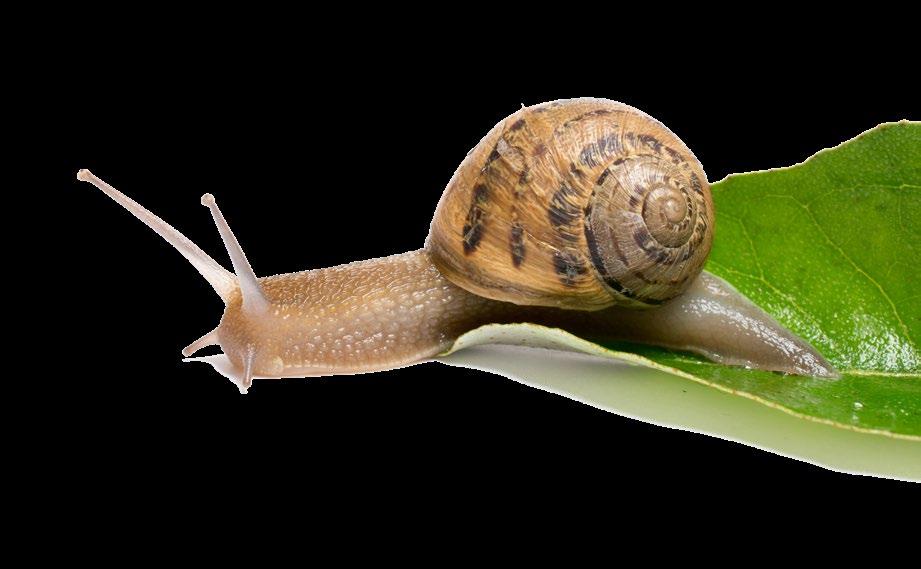
References:
Boch S, Prati D, Werth S, Rüetschi J, Fischer M (2011) Lichen Endo zoochory by Snails. PLoS ONE 6(4): e18770. doi:10.1371/journal. pone.0018770
Castañeda-Ramírez GS, Torres-Acosta JFJ, Sánchez JE, Mendoza-de-Gives P, González-Cortázar M, Zamilpa A, Al-Ani LKT, Sandoval-Castro C, de Freitas Soares FE, Aguilar-Marcelino L. The Possible Biotechnological Use of Edible Mushroom Bioproducts for Controlling Plant and Animal Parasitic Nematodes. Biomed Res Int. 2020 Jun 24;2020:6078917. doi: 10.1155/2020/6078917. PMID: 32685507; PMCID: PMC7333054.
Kitabayashi, K., Kitamura, S., & Tuno, N. (2022). Fungal spore transport by omnivorous mycophagous slug in temperate forest. Ecology and Evolution, 12, e8565. doi.org/10.1002/ece3.8565
Türke, M., Heinze, E., Andreas, K. et al. Seed consumption and disper sal of ant-dispersed plants by slugs. Oecologia 163, 681–693 (2010). doi.org/10.1007/s00442-010-1612-6
South, A. “Terrestrial Slugs: Biology, ecology and control”. Chapman & Hall, 1992. doi: 10.1007/978-94-011-2380-8. Williams, Krista & Cheryl Yuill. Lungworm Infections in Dogs. VCA Animal Hospitals. vcacanada.com/know-your-pet/lungworm-infec tions-in-dogs. July 29, 2022
BioXavi Kief is a writer, researcher, and lifelong learner with their hands in the dirt and their imagination traversing the universe. Seeking always to deepen and integrate their connection with the living planet and its diverse inhabitants, Xavi finds joy by infusing their practical and playful approach to culti vation with a healthy dose of science. They grow food and medicine for their family and community on their NorthEast Coast homestead.



When we think of decolonization, we often think of reconciliation with our Indigenous Peoples.
When we think of regeneration, we think of renewal and solutions to address environmental degradation. But regenerative organic agriculture and decolonization should be inseparable because both aim to correct our exploitative relationship with Nature and its people.
Ironically, or perhaps frustratingly, much of the agricultural systems we are trying to regenerate have origins in Indigenous cultures from all corners of our world. Traditional farming systems understood the commons; they worked within an ecologically- balanced framework; they provided sustenance and capital and respected the need for regeneration within the ecosystem. Some have captured these notions within the organic farming movement. While others would contest, the lack of these issues being addressed has given rise to the regenerative organic agriculture movement.
Regeneration asks us for a paradigm shift just as much as decolonization needs our minds to be re-wired. Borrowing from Audrey Lorde, the organic movement may have been, arguably, “using the master’s tools to dismantle the master’s house” and, to some extent, mimicked a dysfunctional (industrialized) form of agriculture. This “greener” version of an unsound farming system is best highlighted by looking into organic soil management.
Initially, practices of polycultures, mixed farming (i.e., farm animals and crops), green manures, composts, and cover crops were foundational to soil fertility management in organic systems. In large part, these concepts were sidelined, and extractive products like bloodmeal, feather meal, bone meal, and manures from concentrated animal feeding operations became dominant sources of soil nutrients. On the one hand, organic farming systems provide an outlet for industrial waste. Still, on the other hand, it continues to support a dysfunctional form of agriculture that does not share its values around the ethical treatment of animals.
Placing a regenerative organic lens on soil fertility, the carbon loss in producing the nutrient is as significant as the nutrient itself. First, we must note a subtle but important difference in a regenerative organic agriculture philosophy versus organic farming. We
can argue that healthy soil will create healthy plants in organic systems, while regenerative organic systems suggest that healthy plants make healthy soil. As regenerative organic farmers and gardeners, we must support plants in optimizing their photosynthetic potential. We must provide them with the necessary environment to produce secondary metabolites like terpenes, bioflavonoids, phytoalexins, sterols, and other antioxidants for plant health and, eventually, human health. These healthy plants are then unrestricted to what exudates (foods like vitamins, sugars, and amino acids) they provide to soil microbes to keep the soil healthy, sequestering lots of carbon.
Perhaps it’s no surprise to most, but seasonal nutrient cycling in biologically active soils can deliver from 50 to 70% of the recommended crop rates for the big three (NPK Nitrogen, Phosphorus, and Potassium). Providing an excess of these nutrients, especially in the wrong form, can lead to nutrient leaching and environmental pollution, as well as nutrient disorders or pest and pathogen problems for the plant. For example, nitrogen can come in many forms, like nitrate, ammonium, or amino acids. However, providing excess nitrate nitrogen not only requires vastly more energy in plant uptake; it also encourages soft growth, with plants developing large cells with thin cell walls, making them susceptible to diseases like powdery or downy mildew. Similarly, high levels of ammonium in plant sap is a neon light advertising to insects like thrips and spider mites that dinner is served. Ideally, if N can be provided to plants in the form of amino acids as a result of microbial digestion or enzymatic hydrolysis of organic material, the plant can immediately turn those amino acids into proteins, saving energy that can be better utilized for optimal growth.
Our reductionist vision of plant nutrition has overemphasized NPK while undervaluing the importance of other macronutrients, like magnesium, calcium, and sulfur, and trace elements like iron, zinc, boron, copper, manganese, molybdenum, and silicon. Increasing the diversity of the composts used on the farm can be an excellent first step to providing your soil with different

Regenerative organic agriculture and decolonization should be inseparable because both aim to correct our exploitative relationship with Nature and its people



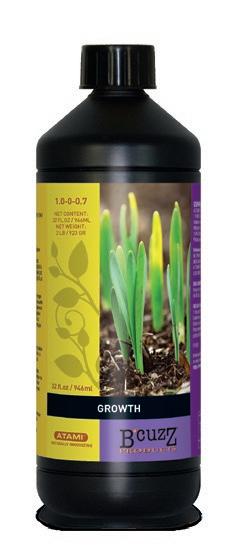

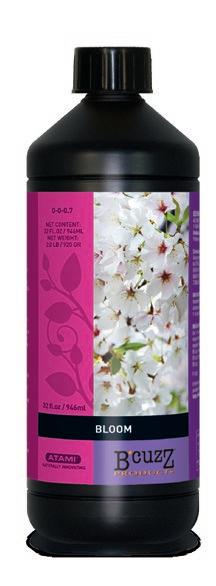

trace minerals. For example, seaweed or sea-based composts, alternating with ruminant composts and perhaps poultry composts, will offer slightly varied microbial populations and elements. Similarly, the use of polyculture (i.e., many species like tillage radish, oats, and white clover) cover crops with root systems that inhabit differing soil profiles may accumulate a broader range of nutrients that will become available for the subsequent crop.
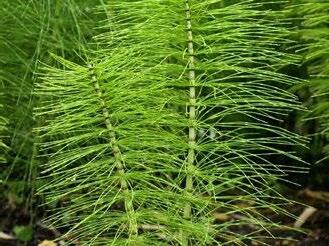
Many mainstream organic farming systems have fallen into the “monoculture of the mind” mentality, as described by Dr. Vandana Shiva. They use a limited definition of yield that focuses only on the sellable product and will often grow their “cash crop” in monocultures. A decolonial regenerative organic farming system will emphasize polycultures. The increased biodiversity has multiple functions ranging from weed and pest management to being a source of on-farm fertility.
Non-cash crop plants like cover crops and weeds can serve as indirect sources of fertility. The use of fermented plant teas is a farming practice that dates back hundreds of years and is only now getting a minor renaissance through the regenerative movement. Many plants can be dynamic accumulators of particular nutrients, often concentrating these elements in their roots or leaves. Comfrey (Symphytum officinale) is known for high levels of calcium. Stinging nettle (Urtica dioica) will concentrate a nice balance of calcium, potassium, magnesium, and phosphorus in its leaves, while Horsetail (Equisetum arvense) can contain high levels of silica.

The list is endless: yarrow (potassium); chamomile and garlic scapes (sulfur), dandelion and chicory (calcium), legumes, redroot pigweed, lambs quarters (nitrogen), cannabis (a nice balance of NPK), etc. etc. These plants are harvested, chopped up to increase surface area, and placed in a bucket and barrel where they will be entirely covered by water (some may add some cane sugar or molasses to kickstart the fermentation). In about a week of fermenting, the concoction will have a pungent odor and is ready for soil application, either in a concentrated form or diluted, depending on the crop and soil type. This fermented tea will contain many microbes critical for reducing elements into forms plants can readily take up. In some cases, many of these nutrients are already made plant-available in the elixir.
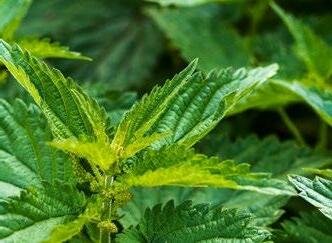
One of the most important aspects of a decolonial regenerative organic agricultural system is humility. In many traditional cultures, the unknown is sacred, and it is okay that some things are unknown and perhaps, more importantly, is the understanding and acceptance that they will never be known. When it comes to soil fertility, the decolonized regenerative farmer is happy to remain in awe. 3
Traditional farming systems understood the commons; they worked within an ecologicallybalanced framework; they provided sustenance and capital and respected the need for regeneration within the ecosystem
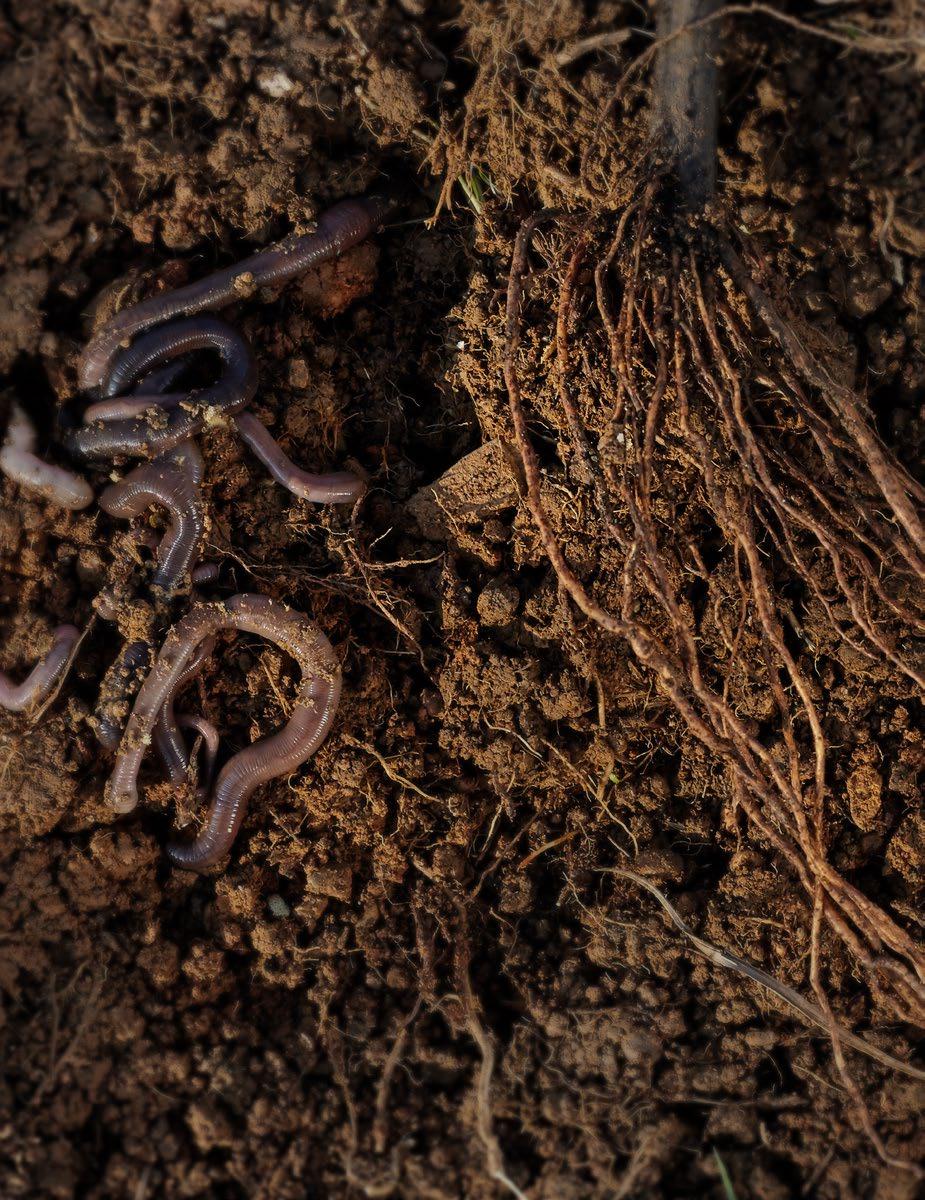 BIO Av Singh, PhD, PAg advocates regenerative organic agriculture serving various organizations, including Regenera tion Canada, Navdanya, and the Canadian Organic Growers.
Comfrey (Symphytum officinale)
Stinging nettle (Urtica dioica)
Horsetail (Equisetum arvense)
BIO Av Singh, PhD, PAg advocates regenerative organic agriculture serving various organizations, including Regenera tion Canada, Navdanya, and the Canadian Organic Growers.
Comfrey (Symphytum officinale)
Stinging nettle (Urtica dioica)
Horsetail (Equisetum arvense)





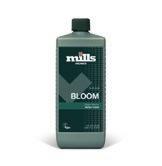
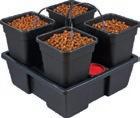











Organic farmers jump through many hoops to be certified, making the transition challenging and costly. To be granted organic certification in the United States, farmers must naturally manage their land without chemical inputs for 36 months. Although the pros of switching from conventional farming practices are clear, the USDA is offering further incentives by investing $300 million in a new Organic Transition Initiative to help farmers with the possible technical and market challenges during the transition period.
According to the USDA National Agricultural Statistics Service, the number of non-certified organic farms tran sitioning to organic production has dropped by 70% since 2008. With the recent investment, the USDA hopes to reverse this trend by opening doors for new farmers wanting to grow organically and increase consumer access to cleaner foods.
The fund will help make this possible by offering technical assistance such as farmer-to-farmer mentoring, conserva tion financial assistance, and extra crop insurance. Future organic growers will also be able to get help finding mar kets with a demand for their specific food crops.
The Organic Transition Initiative is offered in conjunction with the FSA’s Organic Certification Cost Share Program (OCCSP) and the Organic and Transitional Education and Certification Program (OTECP). 3

Sources: USDA to Invest up to $300 million in New Organic Transition Initiative (USDA - bit.ly/3D0Rxqx)

With the recent investment, the USDA hopes to reverse this trend by opening doors for new farmers wanting to grow organically and increase consumer access to cleaner foods.
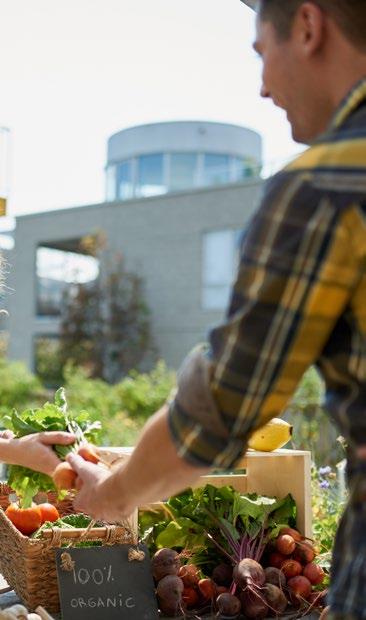


This summer, my backyard was alive with monarch butterflies. Every time I saw one of the caterpillars on our milkweed or the butterflies dancing around the garden, I’d screech with delight and call the kids over to see. It’s the small things, right? By the fourth or fifth time, I could tell they were happier for me than they were about the monarch sightings. My 7-year-old son, Ryan, indulged me by saying it was cool to see since they won’t be around by the time he grows up. So wise, that kid.
Migratory monarch butterflies are now classified as endangered by the International Union for Conservation of Nature (IUCN). Their future is at risk because of habitat destruction and climate change. In other words, because of us.

There’s still time to help them. As gardeners, we can all take small steps to provide delicious food and safe havens for our beautiful pol linator friends.
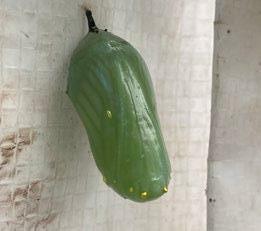
When Ryan acknowledged that monarchs might not be around when he’s older, my daughter, Ella, always looking to solve problems, told me she will have a milkweed farm when she grows up. Now that’s an idea I fully support!
Migratory monarch butterflies are now classified as endangered by the International Union for Conservation of Nature

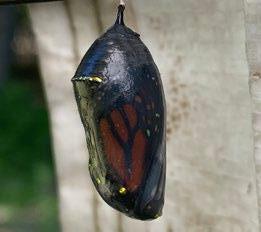
Last fall, Ella and I opened milkweed pods and let the seeds loose. It worked. This year, we had so much milkweed on our property. It sprung up everywhere! I understand that some people wouldn’t like this, as milkweed can be invasive. But Ella and I are all about horticul tural disobedience these days.
If the wild look isn’t your thing, you can purchase milkweed seedlings (or start them from seed) and contain the plants in a raised bed or specific patch of your

And although considered a weed, goldenrod is an essential food source for adult monarch butterflies, sure to leave some for them to enjoy!






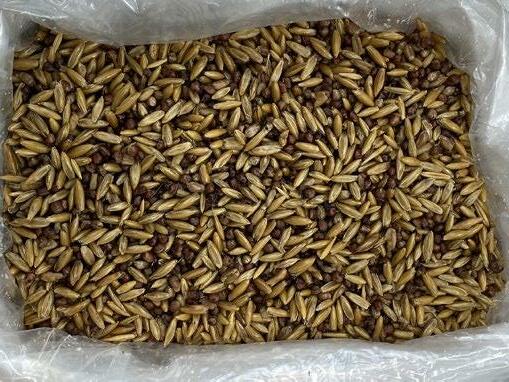
My husband and I are building a new garden at the moment, and one of the things I’ve enjoyed the most through this process is coming up with my plant design. I’ve made careful selections, ensuring that more than a few plants are in bloom at all times of the growing season.
The chosen shrubs and perennials are native to my area and attract various pollinators. There’s something very satisfying about starting a garden from scratch, and I’m so excited to welcome the bees, butter flies, beneficial insects, and birds to our new space.
Here are some of the plants I’ve selected that are big butterfly at tractors:
• Coneflowers (Echinacea)
• Coreopsis grandiflora
• Echinops (Veitch’s Blue Globe Thistle, Sea Holly)
• Phlox (moss phlox and tall phlox)
• Dianthus Kahori
• Achillea millefolium
• Black eyed Susans (Rudbeckia goldsturm)
• Shasta Daisy
• Liatris Spicata
• Gaillardia aristata (Fire Wheels)
• Sedum (Autumn Joy)
• Salvia Blue Marvel
• Butterfly bush

• Meadowsweet
There are so many plant varieties out there that attract butterflies of all kinds! The next time you’re at your local garden center, I encourage you to think about the plants various pollinators love before making your selections; read the tags and have fun with it.
And if a monarch butterfly happens to land on a flower you’re ad miring, or if you stumble upon one of the caterpillars, celebrate. Call the kids over and maybe take some pictures. After all, monarchs are a special and increasingly rare thing. 3

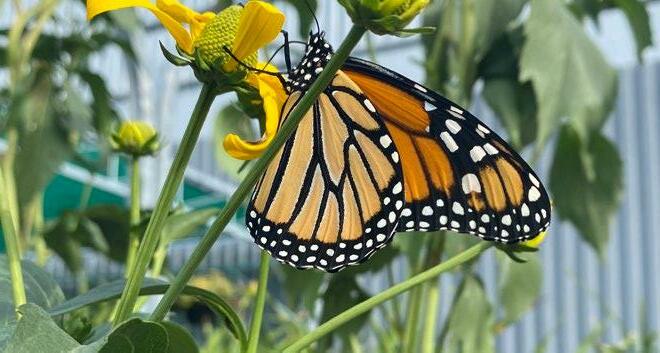
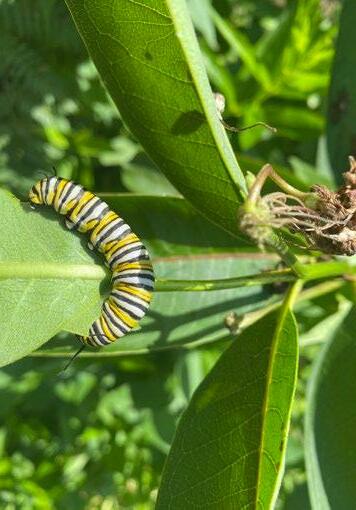
There’s something very satisfying about starting a garden from scratch, and I’m so
if you stumble upon one of the caterpillars, celebrate
Aphids and ants are the most common pests in indoor growing buildings. There are many ways to solve this problem; however, during my ant and aphid infestation, I learned this was nothing like any other pest relationship I have ever encountered.
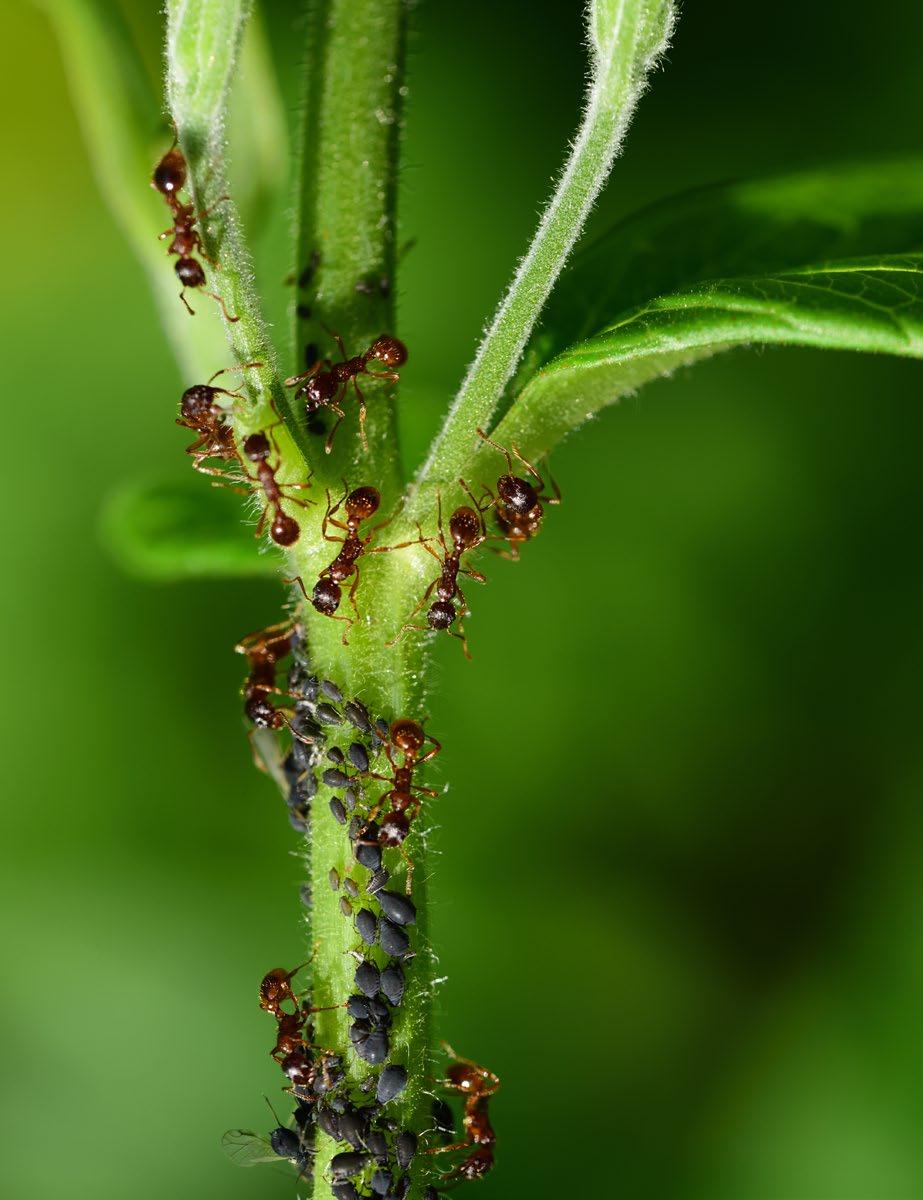
It would be best to shed some light on how I ended up with probably the worst aphid infestation I have ever seen. Of course, we shouldn’t have let it go as far as we did, but it was so interesting to watch that I couldn’t help myself.
It all started in September last year during the Galiano Grow House hemp harvest on Galiano Island. We had a bit of a cold snap, and no one wanted to defoliate outside, so without much thought, or perhaps no thought, we moved harvest inside with no regard for the hemp babies we had in the same room. This move from outdoor to indoor harvest proved fatal to that new hemp crop. While we had a blast defoliating with our “farmer” bucker and listening to tunes, we didn’t realize what was happening. Our retreat from the weather turned into the begin ning of the invasion. However, it didn’t happen right away.
During defoliation, we separate stalks from leaf matter, leaving two waste piles on the ground. The leaves are composted or turned into a hemp compost tea that we feed other plants while the stalks are dried. We have been experimenting with creating paper and other small-scale arts and crafts. We do our best to put everything to good use.
These piles of “waste” turned into something I never thought I would experience in my life. As the days progressed, the ants came. But just as fast as they arrived, they left. We didn’t think too much of it, but a couple of weeks later, we saw a new explosion of ants. This time, the ants seemed to all have white/yellow spots on their backs. Again, we didn’t know what to do, as the ants weren’t hurting our crops, and we don’t like to kill insects for no reason, so we left them be. That has now become one of my biggest mistakes in indoor horticulture.
Shortly after the ants came back, we started to see the aphids. I just assumed they were leftover from our outdoor harvest, so we decided to get predator bugs and send them on a mission. The predators were doing great until we hit the tipping point where the aphids won. The aphids had successfully inhabited every plant in the room and there was nothing we could do about it. If we had un derstood the relationship between ants and aphids, we would have known that ants farm aphids! Yes, that’s right; no different than you or I farming chickens and eating the eggs, ants have aphids, and they milk them for their sweet honeydew. While I am certainly not a bug expert, my simple understanding is that the ants carry and store the aphids in the ant colony, then bring them to plants for the aphids to
feed. The ants then come and “milk” the aphids for their honeydew; this was one of the coolest things I have encountered in the bug world and my indoor horticul ture. If I am not mistaken, ants and hu mans are the only creatures on the planet that farm in this manner.
We watched the process and saw how the ants and aphids behaved. It was wild and creepy to see an inch of plant stalk covered with 50-100 aphids! The affect ed crop was eventually culled and burned so aphids didn’t spread everywhere. We then proceeded to sanitize every inch of the room with Hypo chlorous acid, which we make in-house with our hypochlorous acid generator (check out Adam’s article Cost-Effective Nuisance Control For Indoor and Outdoor Crops in issue US42). We left that room empty for four to six weeks, checking it regularly for aphids or ants. Finally, after many weeks, we concluded our bug problem was gone and that it was time to put more plants in the room!
We loaded the plants up, and everything looked amazing. No joke, the next day, we came into the room that was free of all pests, and there must have been 200 ants running around the floor trying to get back onto my plants. Almost all the ants had aphids or larva on their backs. This is when I saw ants truly farm ing. They stored aphids until I brought back the food, and instant ly, they knew it was game on again.
We took a different approach; we killed the ants with borax and diatomaceous earth. We put borax around the perimeter for them to take back to the colony, and we built a “diatomaceous” dam around all the grow tables, which the ants couldn’t cross. A one-inch strip around everything stopped the ants from crossing. We were able to wipe out the ants, then add our Craziee Mites, and in turn, we haven’t had any aphid problems since.
The longer I grow indoors, the cooler things I see. So next time you have an aphid problem, focus on the ants if you don’t want to end up like me! 3
Adam has provided planning and design services for canna bis and hemp cultivation and processing facilities over the last seven years with Stratus. His projects involve outdoor cultivation, indoor cultivation, drying, processing, extraction, storage, bottling and packaging, and more. Living on a hobby farm, Adam loves all plants, including flowers, vegetables, and microgreens, but is most passionate about hemp and is in awe of the fast-growing plant and all of the benefits it offers to humans and the environment alike.
During my ant and aphid infestation, I learned this was nothing like any other pest relationship I have ever encountered
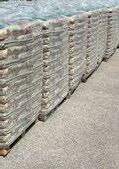

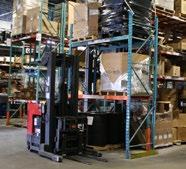
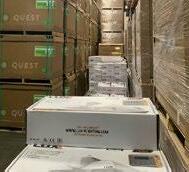

It all started with an idea that had the potential for something great. A vision for the future and a lot of hard work. Founded in 1999 as a labour of love by two visionaries, Biofloral has earned its title as a pillar of the indoor/outdoor gardening, hydroponic, and cannabis communities. Over the last 20 years, the Biofloral team has earned the trust and respect of Canadian growers from coast to coast by cultivating relationships, offering expertise, and supporting you, our customers.
We do what we love and we’re here to help you do the same. We wouldn’t be where we are today if it wasn’t for you, the people we’ve met and served along the way. We believe that fostering a cohesive, vibrant local community that unites passionate people is important to ensuring not only our community’s success but the well being of our plants.
We’re homegrown, independent, strong, and resilient just like you. So here’s to you, the round pegs in the square holes. To the ones that can’t be ignored. The misfits. The rebels. WE ARE, and will always be the disruptors and the change makers. You see things differently, and we’re here for it.
We are here with you for you… then, now and in the future.



 BY JESSE SINGER
BY JESSE SINGER

There are many social and cultural advantages to living in cities. However, there’s also no denying the devastating environmental impact of the urban landscape on our planet. According to UN Habitat, cities make up less than 2% of the earth’s surface, yet they “consume 78 per cent of the world’s energy and produce more than 60 per cent of greenhouse gas emissions.”
The pollution cities put into our air comes from various sources. But construction and building work are responsible for more than one-third of global energy-related carbon emissions, with cement leading the way as the largest single industrial emitter of CO2
So, how has Skelleftea, a town in Sweden, decided to take on this cli mate catastrophe? By building with wood, of course!

The Sara Cultural Center in Skelleftea is a 20-story build ing housing theatre stages, a library, art galleries, and a hotel. It was built using 12,000 cubic meters of wood! Un like cement, which emits CO2 into the environment, wood sucks it in and stores it forever. According to the building architects, the cultural center should imprison upwards of 9 million kilograms of CO2 throughout its lifetime (a tree will absorb about 21 kilograms of CO2 annually)!
The good news is that this wasn’t the first building of its kind. Skelleftea has been using timber for larger construc tion projects since the 1800s; the trend is spreading to other cities in Europe and even the United States. The Sara Cultural Center is only the second tallest wooden tower in the world. The tallest, completed in 2019, is the Mjøstårnet building in Brumunddal, Norway.
Sources:
While some fear this will damage forests, experts believe we have enough wood to satisfy this grow ing construction method world wide. However, it also means tak ing better care of our forests and practicing climate-smart forestry to have the wood we need to build eco-friendly buildings. 3

Earth.org: Sweden’s Wooden Skyscraper Is the Perfect Example of How Sustainable Buildings Can Tackle Climate Change (earth.org/ sweden-sustainable-buildings)
Dezeen.com: Mjøstårnet in Norway becomes world’s tallest timber tower (bit.ly/2UQDvi4)
United Nations: (bit.ly/3uWJPc4)
However, it also means taking better care of our forests and practicing climate-smart forestry to have the wood we need to build ecofriendly buildings.
Unlike cement, which emits CO2 into the environment, wood sucks it in and stores it forever.The Sara Cultural Center in Skelleftea
Topdressing is an excellent way to feed your soil and, in turn, your plants. So in the words of Motley Crue, “Take Me To The Top!”


Anorganic gardener’s job is to maintain their plants and the soil. In productive soils, there is a continual breakdown of organic matter occurring at a surface level. For example, in a healthy rainforest, it’s easy to see the active decomposition at work, the trees towering overhead the results of the enormous power underground. People don’t deliberately apply anything to the soil surface in these forests, but fallen leaves, dead vegetation, bugs, and animal manure end up on the forest floor and decompose into the earth below.
This life cycle is old as time and is as ingenious as it is complex. As the decomposition process takes place, the microbiome builds up, resulting in carbon and nutrient-rich soils capable of supporting vast amounts of growth
This life cycle is old as time and is as ingenious as it is complex. As the decomposition process takes place, the microbiome builds up, resulting in carbon and nutrient-rich soils capable of supporting vast amounts of growth.
Healthy, thriving, organic gardens do best when fed ingredients rich in organic matter. Quality organic amendments and compost provide nutrients and food for soil microbes. These ingredients also contain carbon in their makeup, acting as a long-term nutrient battery that stores and releases nutrition for later use. It is all about building soil over time.
Just like us, our crops are carbon-based life forms. So when we harvest plants, we remove carbon from the ground. If we don’t replenish this carbon store, we have removed a few cells from our battery. Chemically refined nutrients deplete soils over time; you can easily replace the minerals plants use to grow with these refined fertilizers, but they contain zero carbon.
Synthetic fertilizers are not beneficial to microbes. Using these products compromises the soil’s ability to perform various biological tasks. Compounding this issue, we also strip carbon from the soil through continual harvests supported by these mineral-driven products, especially when we don’t replenish the earth in the offseason. Over time, you end up with less biologically active soil that can’t hold on to nutrition. The lovely microbial byproducts that act like glue in our soil dissipate along with the worms and higher forms of life that live on the microbes themselves. The entire structure starts to crumble.
To ensure long-term productivity, we want to replace and maintain as much carbon as possible, so both the plant and the soil have what they need. NPK is not the whole picture; carbon is essential to productive gardens.
We can easily replicate this natural system by feeding the soil with quality organic inputs and applying a mulch layer that actively breaks down over time. Bacteria and fungi immediately begin the decomposition process and, as a result, multiply rapidly. This is the primary driving force for the flow-on effect on other organisms in the microbial hierarchy.
You can plant cover crops to keep the soil active during periods where cropping is not required. Do not harvest and remove them; they are sacrificial and perform the task of keeping all the microflora that live in the roots active and flourishing, ready for your next crop.
Liquid organics offer a quick and attractive hit, but the slow burn of an organic top dressing and the higher amount of carbon results in fewer peaks and valleys throughout the growth cycle and more steady homeostasis.
Productive soils are the bigger picture here. Actively feed the soil with carbon-rich components while your plants grow, allowing them to break down without digging. As a result, gardeners maintain carbon levels instead of losing them to the air. Following this practice throughout the growing season also avoids applying large amounts of fertilizer later. Compare it to continually topping up your battery rather than letting it go flat and recharging.
Amendments from plant matter such as alfalfa, barley, kelp, wheat bran, and neem cake are low in NPK but high in carbon. In contrast, ingredients like blood, bone, fish, and feather meal are higher in NPK and have some carbon. In addition, you can choose to add raw carbon in the form of humates and biochar.
A blend of these components makes an excellent meal for your dirt! Depending on the crop you are targeting or your growth phase, you can select inputs that provide tailored nutrition while building the soil long-term. 3

HVAC equipment is the heart of your grow room. All the air and environmental conditions come from this mechanical equipment. However, most people do not adequately sanitize or service it.
Be conscious of sanitizing your HVAC equipment between each crop
Most air handlers, mini splits or other HVAC equipment come with factory-equipped filters. Sometimes, these filters are robust, and sometimes just a plastic mesh. Regardless of the filter provided, these items need constant maintenance. At a minimum, you should inspect these filters every 30 days. Most of the air in your room runs through these units, so any bugs, molds, or particulate you have in the air will be in those filters. The longer they plug up, the harder it is for your fan to push air and the less effective your HVAC unit works. This also leads to lower efficiency and more power draw on your unit.
Knowing that your filters are this important, you should learn what type of filter you have and how to replace or clean it. Plastic and metal mesh filters are less effective than their fabric counterparts, so you must consider cleaning them more often. Some fabric filters will only last 30 days, while HEPA filters can last over a year if properly maintained. Understanding these maintenance intervals is essential.
Figure 1
We typically like to describe the ability of mold to grow based on the “mold square”. This square is based on the four components needed for mold growth: food, moisture, temperature, and spores.
In a grow environment, you, unfortunately, can’t manipulate the temperature and humidity much, as they are a fixed requirement for the growing process. The only way to control mold in a grow facility is to contain food and spores. We can prevent spores with UV or similar technology. They also tend to be drastically reduced in buildings with indirect gas-fired heaters as they reach 400°F + surface temperatures and help kill them. In a cannabis facility, your best bet is to minimize the mold’s food with repeated and regu lar sanitization to stop mold growth. Direct filters are an excellent place for high amounts of “mold food” to build up.
Filter media and any area where moisture resides tend to have a higher potential for mold. Unfortunately, you cannot control all the aspects of mold, so the best option is to clean regularly and change filters often. Be conscious of sanitizing your HVAC equipment be tween each crop. I recommend keeping your HVAC fan running, even if the room isn’t operating. Any stagnant air in spaces with moisture will cause mold growth. I have been through buildings that didn’t appear to have any mold smell or problems, so the owner turned the HVAC unit off for a few weeks to save on power. The
At a minimum, you should inspect these filters every 30 days. Most of the air in your room runs through these units, so any bugs, molds, or particulate you have in the air will be in those filters

mold growth and odor were horrible when they turned it back on. You will always have spores in the air, so don’t allow them to grow.
For cannabis growing, we need to keep tight temperature and hu midity conditions to maintain a healthy environment. You can see from the Sterling chart below what a healthy environment is not to have mold growth or viruses. You’ll note that both high and low humidity can cause different problems. While the Sterling chart was created to advise on human health in hospitals and health care, it can also show the necessity of an adequately controlled cannabis environment. It is essential to keep humidity between 40-60% to avoid pathogen growth. Knowing that many people try to keep at least 60% RH in a grow room makes it very difficult to control mold as it is on the edge of proliferation. You can see from this that we need to ensure we properly clean our filters so as not to concentrate mold in one spot.
Filter maintenance and regular sanitization of your HVAC will prevent years of problems and stop repeated crop issues. Filters collect thou sands of aphids, grow all sorts of stuff, prevent proper airflow, and lead to many other problematic and beneficial things. So make sure to clean them often and pay attention to maintenance. 3
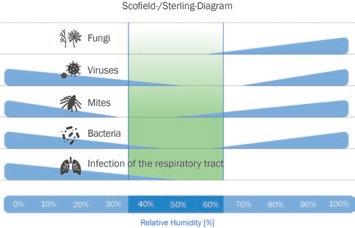

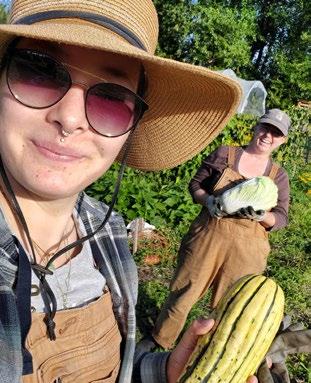



Bella Organic understands and appreciates that Nature has always been able to find balance without organic farm on beautiful Sauvie Island grows more than 70 varieties of berries, fruits, vegetables, pumpkins, vineyard grapes, herbs, and more. Sustainable and responsible growing practices and the fact that the family farm runs on 100% solar energy make Bella Organic super green. Customers enjoy the farm’s nutritious produce through U-Pick, Already-Picked, and local retail and wholesale markets. People are also welcome to visit the farm store and participate in some fun on-site activities. The global pandemic has created a booming agri-tourism industry, and Bella Organic takes part by offering interactive experiences for customers, like incredible corn mazes. The familyfriendly maze features 2.7 miles of pathways over seven acres and often comes with a theme like uniting against hate, equality, and hope. Now those are messages we can get behind! A haunted corn maze is open every weekend in October for the more daring people looking for a scare. Free hayrides to the pumpkin patch for the U-Pick harvests begin at the end of September and run through to Halloween. And because the gourds are organic, you can feel good about eating them after carving instead of tossing them into the landfill!
If you’re looking for unusual varieties of fruits, vegetables, and herbs, look no further than Bumblebee Farm. Farmers Amy and Katy follow sustainable and organic growing practices to deliver delicious produce such as heirloom tomatoes, beans, and chicories like frisée and radicchio to their local community. No-till farming keeps precious soil life intact, and wildflowers grow amongst the food crops to encourage pollinators and other beneficial insects to pop by and help with the farm’s growing ventures. Many of the crop varieties Bumblebee Farm specializes in are on the Slow Food Ark of Taste, flavorful foods at risk of disappearing due to industrial agriculture. These crops weren’t bred for shipping, but growing them on a small scale means we can still enjoy them locally. Amy and Katy run a successful CSA program, harvesting their crops no more than a few days before delivering them. They vigorously promote seasonal eating, helping customers reap the benefits of mindful eating and connecting with their food. And because the products included in the CSA aren’t your typical run-of-the-mill fruits and veggies, Amy and Katy offer delicious recipe ideas to inspire out-of-the-ordinary culinary creations. Bumblebee Farm is a proud member of the Viva Farms business incubator, a program that provides new farmers support and access to shared equipment and infrastructure. This fantastic initiative helps make Bumblebee Farm’s journey wonderfully delicious.
 Credit: Bumblebee Farm
Credit: Bumblebee Farm


After decades of prohibition, hemp plants are finally back in the spotlight for their sustainability, rapid growth, and multiple uses. Blue Sky Hemp

Ventures dedicates itself to producing top-quality hemp products with a zero-carbon footprint; the company currently grows hemp plants on 7,000 acres of farmland in Western Canada and hopes to expand up to 20,000 acres with its growing partners. Blue Sky uses every plant part, ensuring nothing goes to waste. The plant’s grain makes its way into meals as a superfood (think hemp seeds), the flower is used for CBD extraction for healing medicine, and the stalks are turned into a variety of industrial products. Unique ag technology helps the company identify its best quality acreage and maximize yields while keeping an eye on product quality. Two state-of-the-art facilities in Saskatchewan streamline harvest and processing; one just outside of Rosetown offers a 9,800 square-foot processing room for raw hemp biomass destined for CBD extraction and waste products. Another 15,000 square-foot facility in Saskatoon processes 5,500 tonnes of hemp seed a year. Looking to a greener future, Blue Sky hopes to focus on hemp fiber to produce textiles, building materials, hemp plastics, and more. Most of all, it’s hoping to raise awareness about the wide variety of benefits hemp can offer, whether it be to humans through food and medicine or to the planet’s health.


Blue Sky Hemp Ventures

Blue Sky Hemp Ventures

Sometimes, you stumble upon a growing project that makes your heart sing, and Young Roots Farm is one of them. This small-scale ecological farm is part of Camp Amy Molson, offering marginalized youth (low-income, immigrant, black, indigenous, and Asian youth) the opportunity to connect with our environment, the traditions of the past, and discover the power of healthy, homegrown food. The farm is nestled in the beautiful Laurentian mountains, on unceded Anishinaabe and Kanienke’ha territory, allowing campers to exchange the hustle and bustle of the city for the tranquility Nature has to offer. Hundreds of youth participate every summer, growing 900 kilograms of organic veg from seed to harvest and learning about the many medicinal and environmental benefits plants provide all along the way. Students learn how to garden using methods that build soil and welcome living creatures of all shapes and sizes below and above the ground. The farm encourages the younger generation to look at how our ancestors lived and apply those healthy and simple practices to their own lives. Various workshops cover medicinal plants, using fire to cook, food sovereignty, how to nourish our bodies with traditional dishes, and ecosystem and plant science. The program offers something for everyone between the ages of five and 17. If the future needs to be greener, Young Roots Farm is a fantastic start in the right direction.


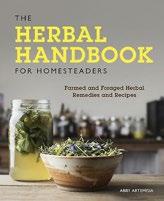




Pack about two cups of herbs loosely in a ½-gallon (1.9L) Ma son jar.
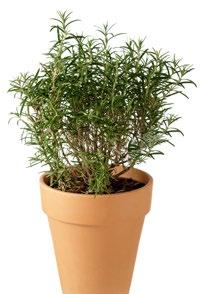

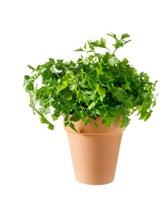

Pour apple cider vinegar, wine vinegar, or rice vinegar over the herbs, making sure it covers the plants by about an inch.
Place some parchment or wax paper over the jar and seal the lid. Store out of direct sunlight for two weeks, shaking daily.
Strain the vinegar and discard the greens. Return the vinegar to the jar, label it, and store it in a cool, dark place to prevent mold. Use within a few months.
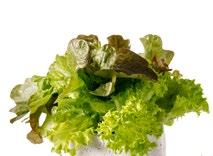
herbal vinegar will help you enjoy your garden’s yield throughout the winter!
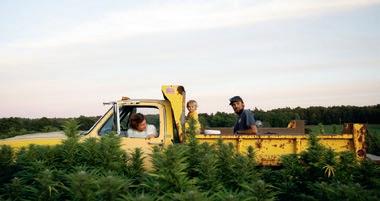



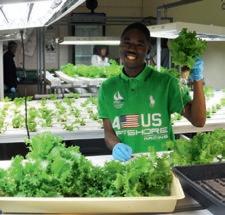
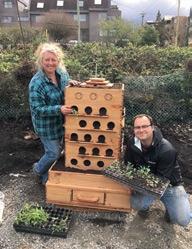




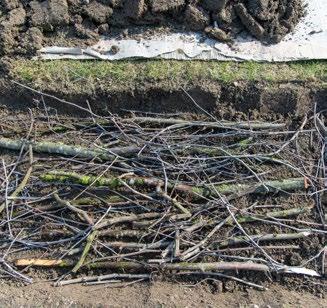
With so many negative headlines and extreme weather events these days, it’s easy to feel anxious about climate change. But we can all lend Mother Nature a helping hand through regenerative gardening practices! Whether tending to a large backyard garden or just a few containers on a balcony, you can incorporate various techniques into your gardening regimen that will help sequester carbon and attract pollinators and other wildlife. If regenerative agriculture is the way of the future, then we’re all in! Join us by giving one or all of the following tips a try in your own home garden.
It’s cheap and easy on the back; no wonder hugelkultur is taking off in home gardens everywhere! This no-dig technique has been around for centuries and is a tried and true regenerative growing practice. No need for expensive products or inputs; hugelkultur involves building garden beds by recycling woody debris and other natural materials you already have lying around the house, such as logs, branches, fallen leaves, grass clippings, and old newspapers.You’ll create your garden by layering all of these items, like lasagna. Start with a log pile between one and three feet tall and cover it with a layer of nitrogen-rich material, like grass clippings, compost, seaweed, or aged manure.This layer jumpstarts the log decomposition. Finally, cover your garden with 6-12 inches of hay, straw, wood chips, or shredded leaves to help with water retention. Your garden will slowly break down over time while feeding your plants the nutrients they need. You can feel good about recycling naturally decomposing materials, using less water, storing carbon, and more! If you’re short on space, this method works just as well in containers, so no excuses.
Check out our blog for more hugelkultur gardening tips!
Doing things that are out of the ordinary keeps life interesting, but when it comes to your outdoor home garden, stick to the ordinary. In other words, don’t go crazy selecting unique plant and flower varieties; native plants are always best, especially in regenerative gardens where reducing your carbon footprint is critical. Flowers, shrubs, and ground covers native to your agricultural zone will better handle the region’s weather conditions, be more resistant to pests and diseases, and are low-maintenance. They don’t require a lot of watering, fertilizers, or chemical sprays of any kind, making these cottage-style gardens a super eco-friendly option for us all. Better yet, local wildlife, pollinators, and other beneficial insects love them; all the more reason to stick with varieties your region knows. If you need some help getting started with design, check out our article on page 28.

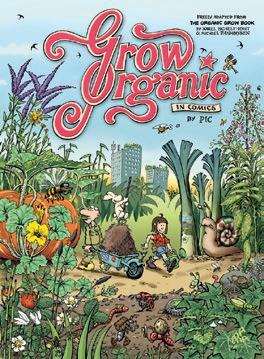
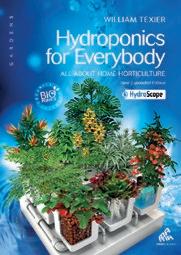

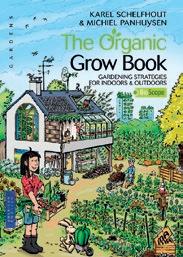



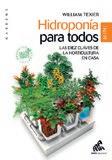
Grass that looks like a putting green has long represented the quintessential yard, but regenerative gardeners are shaking things up with horticultural disobedience. Take a walk on the wild side by replacing turf grass with wildflowers, clover, ornamental grasses, and other ground covers. Bees, butterflies, and birds will come to your property in droves, and you’ll be able to take it all in because you won’t be busy mowing, watering, or spraying the lawn. Good times! If you’d still like to sow a more typical lawn, look for bags of seed offering hardy plant mixes rather than one single variety of grass. They might cost more upfront, but you won’t spend as much money or time maintaining your lawn down the road. Allow lawn plants to go to seed before mowing, offering pollinators plenty of clover and dandelions to enjoy. It’s all about tweaking the vision of what our homes and gardens should look like; while cookie-cutter residential lawns have been the idea of perfection for years, it’s time to start accepting that our yards should be perfectly imperfect. It’s also an excellent opportunity to let your inner rebel loose. You’re so bad.
Insect hotels are an interesting feature to add to any garden, regardless of type or size.They’re visually appealing and offer beneficial bugs a safe spot to hibernate for the winter.Then, when temperatures warm up, they’ll come out and head straight into your garden, giving you a leg up on pollination for the season! You can purchase pre-made bug hotels at your local garden center, but there are also plenty of easy DIY project plans in gardening books or online. Another awesome garden feature is a homemade worm hotel. In her book, The Regenerative Garden, Stephanie Rose describes a worm hotel as a combination of spot composting and a vermicompost bin buried in the soil. Ideal for small spaces, the hotel creates a space for worms to break down organic matter for your plants to enjoy. All you need is a tube or bucket that’s open at the bottom and can be closed with a lid at the top. Place the hotel in a spot that will benefit from extra nutrients; backfill around the outside so that only about three inches are above the ground. Fill the inside with bedding material such as dried leaves, shredded paper, or straw, and then add some fresh compost to dampen the carbon material. Top the compost with 200 composting worms and regularly feed them vegetable kitchen scraps. Cover them with more bedding material, and you’ll be well on your way to the richest compost possible in no time!


The most basic principle in regenerative/organic gardening is creating a healthy environment for plants to grow.There’s no need for chemical inputs of any kind; if your soil is healthy, your plants will follow suit and be less prone to pests and disease. Amend soil with compost and green manures like clovers, hairy vetch, and mung bean. Make homemade compost with kitchen scraps, or buy the best you can afford from a nursery.They call it ‘black gold’ for a reason; organic matter and microorganisms work together to create an aerated, nutrient-rich soil that retains moisture without becoming too wet. Protect that beautiful earth from washing away or becoming overgrown with weeds by mulching between and around plants. Mulch is also essential for keeping soil temperatures consistent and preventing water evaporation. No need to purchase anything expensive; natural materials such as wood chips, shredded leaves, straw, and grass clippings do the trick. When you nurture your soil, you nurture your plants and vice versa. Begin with this in mind, and the rest will fall into place.

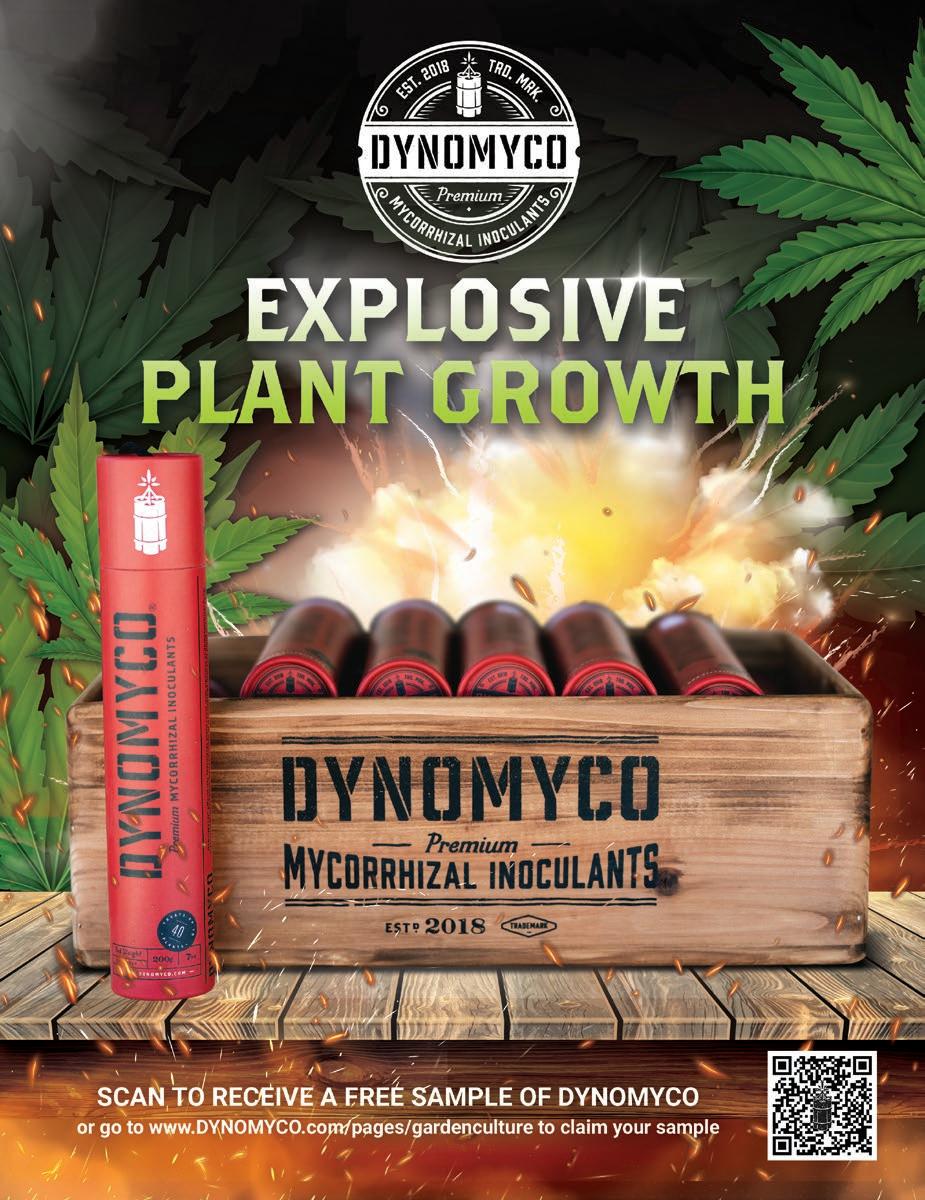

MIICROBIAL MASS utilizes the latest scientific understanding in soil microbiology. We have created the perfect biostimulant which contains five targeted strains of beneficial bacteria that aid in the uptake of Phosphorus, Calcium and Iron like no other product on Earth.



SPECIFIC FOR CANNABIS AND HEMP PRODUCTION
FASTER ROOT DEVELOPMENT AND INCREASED ROOT BIOMASS
FASTER VEGETATIVE GROWTH
INCREASED PLANT HEALTH AND VITALITY
THICKER STALKS AND STRONGER BRANCHES
INCREASED YIELD
HIGHLY EFFECTIVE WITH ALL NUTRIENT PROGRAMS AND GROWING MEDIA
CERTIFIED ORGANIC & CFIA REGISTERED
For soil or hydroponic gardening, outdoor hemp production, field crops and greenhouses. Safe for use with edible crops.
Visit our website and use promo code “ENHANCE”.
CANNA

Green Market.




kind of
highest quality source
well as keeping it simple.